
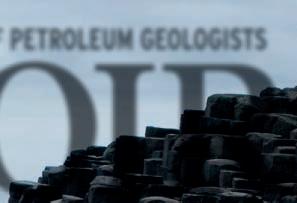
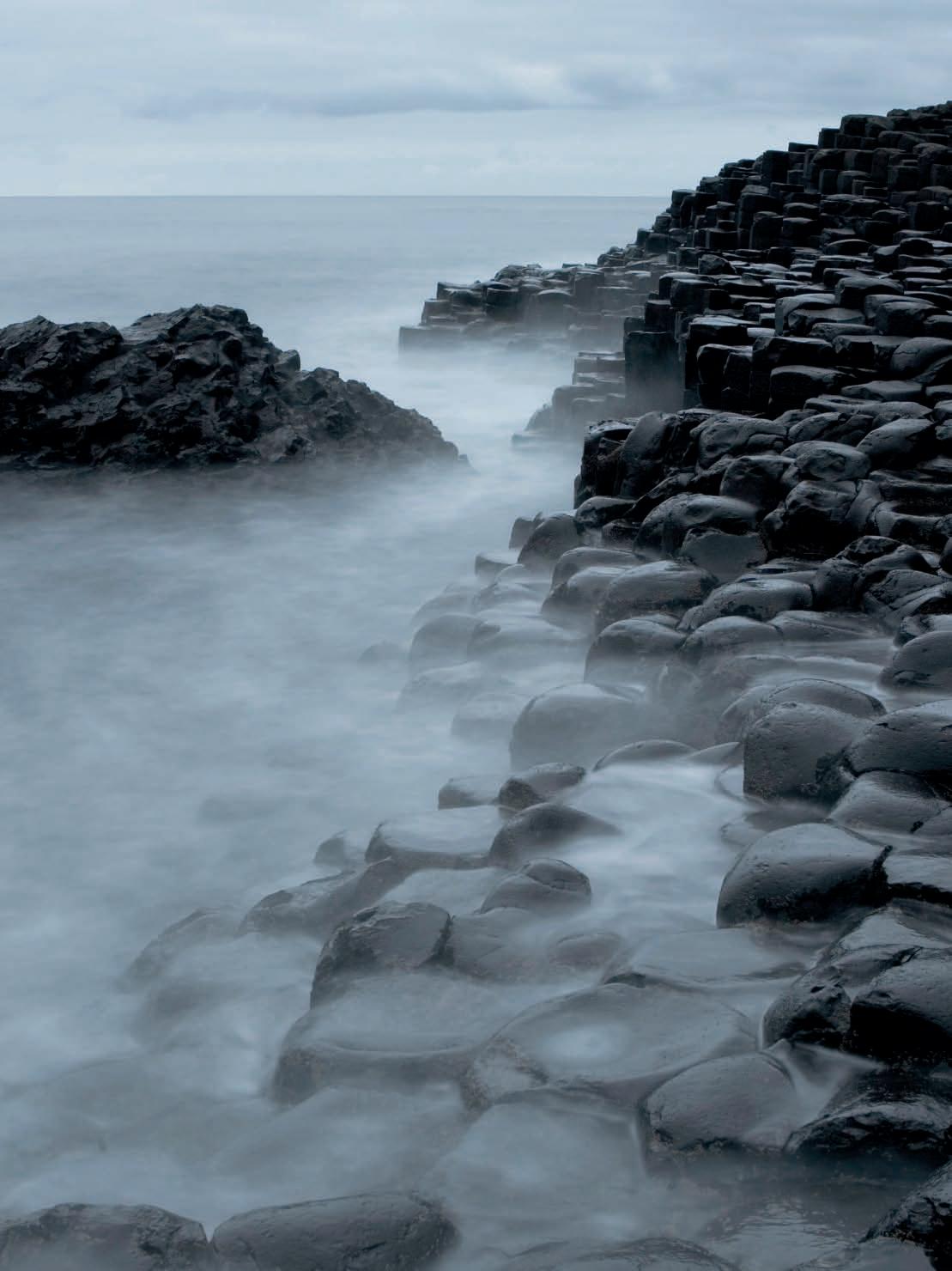
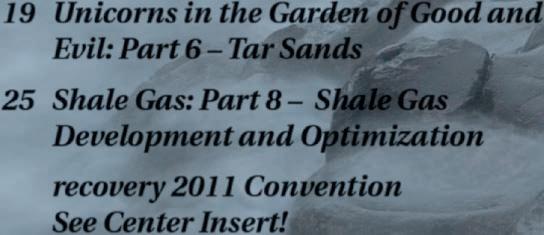













IHS PETRA ® provides a unique solution to integration, analysis and manipulation of geological, geophysical, petrophysical and engineering information. With easy data loading and a powerful and flexible database, you can both effectively manage projects and quickly visualize results using interactive mapping, cross sections, log plots, cross plots and more—all within a single system. Superior technical support and proven integration of customer enhancements make PETRA the highest-ranked 1 geological interpretation tool in the E&P industry for both reliability and accuracy and ease of use. Energy information, refined.
1 Welling & Company Geological & Geophysical Software Study, 2009




#600, 640 - 8th Avenue SW
Calgary, Alberta, Canada T2P 1G7
Tel: 403-264-5610 Fax: 403-264-5898
Web: www.cspg.org
Office hours: Monday to Friday, 8:30am to 4:00pm
Executive Director: Lis Bjeld
Email: lis.bjeld@cspg.org
Technical Programs and Social Events Coordinator: Dayna Rhoads
Email: dayna.rhoads@cspg.org
Publications Coordinator: Caitlin Young
Email: caitlin.young@cspg.org
Member Services Coordinator: Kasandra Klein
Email: kasandra.klein@cspg.org
Outreach Coordinator: Alyssa Middleton
Email: alyssa.middleton@cspg.org
Corporate Sponsorship: Lis Bjeld
Email: lis.bjeld@cspg.org
Convention Contacts:
Convention Manager: Aileen Lozie
Email: aileen.lozie@cspg.org
Sponsorship and Exhibits Coordinator: Alyssa Middleton
Email: alyssa.middleton@cspg.org
EDITORS/AUTHORS
Please submit RESERVOIR articles to the CSPG office. Submission deadline is the 23rd day of the month, two months prior to issue date. (e.g., January 23 for the March issue).
To publish an article, the CSPG requires digital copies of the document. Text should be in Microsoft Word format and illustrations should be in TIFF format at 300 dpi., at final size. For additional information on manuscript preparation, refer to the Guidelines for Authors published in the CSPG Bulletin or contact the editor.
Technical Editors
Ben McKenzie Colin Yeo (Assistant Tech. Editor) Tarheel Exploration EnCana Corporation Tel: 403-277-4496 Tel: 403-645-7724 Email: bjmck28@shaw.ca Email: colin.yeo@encana.com
Coordinating Editor
Caitlin Young, Publications Coordinator, CSPG Tel: 403-513-1227, Email: caitlin.young@cspg.org
ADVERTISING
Advertising inquiries should be directed to Caitlin Young, Tel: 403-513-1227, email: caitlin.young@cspg.org. The deadline to reserve advertising space is the 23rd day of the month, two months prior to issue date.
The RESERVOIR is published 11 times per year by the Canadian Society of Petroleum Geologists. This includes a combined issue for the months of July and August. The purpose of the RESERVOIR is to publicize the Society’s many activities and to promote the geosciences. We look for both technical and non-technical material to publish. Additional information on the RESERVOIR’s submission guidelines can be found at http://www.cspg. org/publications/pubs-reservoir-submissions.cfm.
The contents of this publication may not be reproduced either in part or in full without the consent of the publisher. Additional copies of the RESERVOIR are available at the CSPG office for $6.50 each. No official endorsement or sponsorship by the CSPG is implied for any advertisement, insert, or article that appears in the Reservoir unless otherwise noted. All submitted materials are reviewed by the editor. We reserve the right to edit all submissions, including letters to the Editor. Submissions must include your name, address, and membership number (if applicable). The material contained in this publication is intended for informational use only.
While reasonable care has been taken, authors and the CSPG make no guarantees that any of the equations, schematics, or devices discussed will perform as expected or that they will give the
or


At APEGGA we like to make science fun! We also hope to attract the best and brightest students to careers in geoscience. And we remain committed to building strong relationships with the geoscience community. Put that all together and you get an active geoscience outreach and sponsorship program.
In fact, every year APEGGA provides in-kind donations and thousands of dollars to multiple groups as a sponsor of organizations and events including: Alberta Science Literacy Society, Alberta Women’s Science Network, Burgess Shale Foundation, Canmore Museum and Geoscience Centre, Doodle Train, Earth Sciences for Society, Geophysics Undergraduate Student Society, Geoscience Day, Honorary Address, P.S. Warren Undergraduate Geological Society, PTAC Spring Water Forum, Rock ‘N’ Fossil Clinics, Rundle Group of Geology, Science Alberta Foundation, Seismic in Motion, Stones and Bones Summer Camp, TELUS World of Science Calgary and Edmonton and W.C. Gussow Geoscience Conference as well as multiple science olympics and science fairs.
That’s because, like you, we see sponsoring geoscience outreach organizations and events as an investment in future human capital and an important opportunity to raise awareness of the wealth generation and quality of life made possible by geoscientists right here in Alberta.
By working with Alberta’s geoscience community, we help to ensure that today’s students become tomorrow’s geoscience leaders.
Investing in the Future: Visit www.apegga.org for more information or call Tom Sneddon, P.Geol., Geoscience Affairs Manager at 403-262-7714 or 1-800-661-7020.
This ad is the seventh in a series















President Kirk Osadetz • Geological Survey of Canada, Calgary kosadetz@nrcan.gc.ca Tel: (403) 292-7022
Vice President
Robin Mann • AJM Petroleum Consultants rcmann@ajmpc.com Tel: (403) 648-3210
Past President
John Varsek • Cenovus Energy john.varsek@cenovus.com Tel: (403) 645-5417
Finance director
Darren Aldridge • Baker Hughes Incorporated darren.aldridge@bakerhughes.com Tel: (403) 537-3400
assistant Finance director
Andrea Hood • geoLOGIC systems ltd. ahood@geologic.com Tel: (403) 262-1992
Program director
Brett Norris • TransGlobe Energy Corp. brettn@trans-globe.com Tel: (403) 264-9896
assistant Program director
Jon Noad • Murphy Oil Corporation jon_noad@murphyoilcorp.com Tel: (403) 294-8829
serVices director
Chris Seibel • Nexen Inc. chris_seibel@nexeninc.com Tel: (403) 699-4558
assistant serVices director
Michelle Hawke • Apache Canada Ltd. Michelle.Hawke@apachecorp.com Tel: (403) 261-1200
communications director
Jim Barclay • ConocoPhillips Canada
Jim.E.Barclay@conocophillips.com Tel: (403) 532-3889
assistant communications director
Stephen Hubbard • University of Calgary steve.hubbard@ucalgary.ca Tel: (403) 220-6236
outreach director
Steve Dryer • Whiskey Jack Resources Inc. whiskeyjackresources@telus.net Tel: (403) 969-2292
assistant outreach director
Simon Haynes • Statoil Canada Ltd. sihay@statoil.com Tel: (403) 724-0364
executiVe director
Lis Bjeld • CSPG lis.bjeld@cspg.org Tel: (403) 513-1228
A message from ETF Chairman, Claus Sitzler

Many of you have a strong bond to the CSPG. Whether the bond was built through years of volunteer service, presenting papers and posters, participating in continuing education courses, field courses, or core seminars, involvement with SIFT, or simply coming to division meetings or technical luncheons, we are proud to belong to the CSPG. The cost of membership and belonging is very low compared to the myriad of benefits that we receive as members.
The CSPG Educational Trust Fund (the “Trust”) was started as the stable funding arm for SIFT (Student Industry Field Trip) and through the years has grown into a fund that is reaching out to the CSPG membership to help the Society better fund its many current and expanding initiatives. The role of the Trust within the CSPG has changed over the last 30 years and so our original Trust deed has become outdated. We have spent the last year working with the CSPG Executive to come up with a new Trust deed. The new deed is in the final stages of approval and we hope to have it in place before the summer. The broadened Trust deed will allow us to fund a wider range of CSPG Outreach activities and other Canadian Outreach goals envisioned by the CSPG Executive. New Outreach initiatives that have been very successful include a widely expanded student membership drive to both attract students early and then keep them as members as they transition into the industry. The Trust has long been a major sponsor of the EdGeo program. EdGEO, initiated in the early 1970s, supports local workshops on earth science for Canadian teachers. It is coordinated by the Canadian Geoscience Education Network of the Canadian Federation of Earth Sciences (CFES). By educating 300-400 teachers per year through the workshops, and assuming about 50-60 science students per teacher, that means that the CSPG is helping to provide better geoscience education to 20,000 or more students a year!
At the request of donors, we are looking at several other new initiatives. We can be extremely flexible in our ability to set up a new scholarship or bursary, program, or named function by working closely with the CSPG executive to structure the program to suit the wishes of the donor. Many people consider that only Corporations donate to the Trust. Private individuals, like yourselves, can have significant tax advantages by donating to the Trust, either in cash, stocks, or physical property. The Trust can also be considered as a way of leaving a legacy for the CSPG through your will. We would love to discuss ways of
(Continued on page 7...)


18, 2011 www.cspg.org/gussow
Saskatchewan & North Dakota invite you to attend the 19th Williston Basin Petroleum ConferenCe
May 1-3, 2011
Evraz Place
Regina, SK, Canada
• Technical seminars
• Activity updates including “Hot Plays”
• Workshops
• Exhibitor and equipment displays
Online registration is available at www.wbpc.ca For more information email: info@wbpc.ca



CORPORATE
SPONSORS
AAPG
AGAT LABORATORIES
APACHE CANADA LTD.
APEGGA
ARC FINANCIAL CORPORATION
ARyTON CONSULTING ExPLORATION LTD
BAKER ATLAS
BLUEBACK RESERVOIR
BOyD PETROSEARCH
CANADA BROKERLINK
CANADIAN NATURAL RESOURCES LTD
CASEy & ASSOCIATES
CENOVUS ENERGy INC.
CGG VERITAS
COLORADO SCHOOL OF MINES
CONOCOPHILLIPS CANADA LIMITED
DEVON CANADA CORPORATION
DIVESTCO INC.
ENCANA
ENERPLUS RESOURCES FUND
FUGRO AIRBORNE SURVEyS CORP.
FUGRO – JASON
GEOEDGES INC.
geoLOGIC systems ltd.
GEOMODELING TECHNOLOGy CORP.
GEOSTRATA RESOURCES INC.
HALLIBURTON ENERGy SERVICES
HUNT OIL COMPANy OF CANADA
HUSKy ENERGy INC.
IHS
IMPERIAL OIL RESOURCES
LARIO OIL & GAS COMPANy
LITTLE ROCK DOCUMENT SERVICES
LORING TARCORE LABS LTD.
MJ SySTEMS
MURPHy OIL COMPANy
NEURALOG
NExEN INC.
PENN WEST ENERGy TRUST
PETROCRAFT PRODUCTS LTD.
PLUSPETROL
PROVIDENT ENERGy LTD.
RPS ENERGy
SCHLUMBERGER CANADA LTD.
SENSOR GEOPHySICAL LTD.
SHELL CANADA LIMITED
SPROULE ASSOCIATES LIMITED
SUNCOR ENERGy INC.
TALISMAN ENERGy
TOTAL E&P CANADA LIMITED
TOURMALINE OIL CORP.
TUCKER WIRELINE LTD.
WEATHERFORD LABORATORIES
(...Continued from page 5)
creating a legacy by listening to and acting upon your ideas and goals for meaningful and lasting Outreach initiatives. The Trust has been fortunate to be placed in some wills already by members wanting to give back to the Society that gave them so much throughout their careers.
Next month, we will be thanking our past donors in a larger CSPG Educational Trust Fund spread in the Reservoir magazine. Since the 2011 CSPG membership renewal was started last November, we raised over $20,000 through your generous contributions when you renewed your membership. Almost all of this money was raised through smaller donations in the $25-100 range. Even these smaller donations can make a significant difference to the Trust. The Trust is improving our Donor recognition plan to broaden our ability to create new ways to thank our members who make significant contributions to the Trust and our longterm Outreach goals.
A tax-effective way of contributing to the Trust is by donating shares directly to the Trust’s account at the Calgary Foundation. More details, with examples, will follow in next month’s reservoir (see also March 2011 Reservoir, page 40). your donation to the Trust will fund CSPG Outreach activities for many years to come. For example, a $100,000 donation to the Trust will fund an extra $5,000 of
Outreach funding for 20-30 years while still leaving the principal donation intact in the trust fund. In this way, several generations of new Geologists will benefit from your legacy.
Our board currently consists of nine members: Peter Harrington as Treasurer; Dan Krentz as Secretary; John Cuthbertson, Bruce McIntyre, John Hogg, Clint Tippett, as Independent Trustees; Robin Mann, Vice President of the CSPG; Steve Dryer and Simon Haynes, CSPG Outreach Trustees; and myself as Chairman.
If you are interested in helping us raise funds or promote the Outreach activities of the CSPG please contact us at cspgtrust@cspg.org. If you would like to discuss in detail more about what the ETF is about and what we would like to accomplish, please contact us at cspgtrust@cspg.org. To donate to the ETF, you can follow the links to donate on the CSPG website or donate directly online to the Trust through the Canada Helps website at www.canadahelps.org/ donationdetails.aspx. Lastly, you can mail or drop off your donation to: Treasurer at CSPG Educational Trust Fund, 600, 640 – 8th Avenue SW Calgary, AB T2P 1G7.
Geoscientists for our future

The CSPG regrets to announce that long-time member Paul Fuenning has passed away on February 6, 2011 at the age of 92. Paul was a member of the CSPG since 1957. Our sincerest condolences go out to the entire Fuenning family.
SPEAKER
Christopher D. Laughrey Weatherford Laboratories
CO-AUTHORS
Laughrey, Christopher D. 1 , Lemmens, Herman 2 , Ruble, Tim E. 3 , Butcher, Alan R. 4 , Walker, Greg 3 , Kostelnik, Jaime 5 , Barnes, John 5 , Knowles, Wayne 3 .
1 Weatherford Laboratories, 16161 Table Mountain Parkway, Golden, CO 80403.
2 FEI Company, Eindhoven, Netherlands.
3 Weatherford International Ltd., 5200 North Sam Houston Parkway West, Houston, TX 77086.
4 FEI Company, Brisbane, Queensland, Australia.
5 Pennsylvania Geological Survey, Pittsburgh, PA.
11:30 am
tuesday a pril 5, 2011
c algary, te L us c onvention c entre c algary, a lberta
Please note: the cut-off date for ticket sales is 1:00 pm, thursday, march 31, 2011. csPg member ticket Price: $42.00 + gst nonmember ticket Price: $45.00 + gst
Each CSPG Technical Luncheon is 1 APEGGA PDH credit. Did you know that you can book a table for the Technical Luncheon? To book your company’s table or to buy tickets, visit http:// www.cspg.org/events/events-luncheons.cfm.
Thermogenic shale gas produced from the Marcellus Formation in the northeastern region of the play in Pennsylvania is postmature. Petrologic and geochemical parameters suggest that Marcellus shale gas reservoirs reached maximum burial depths and temperatures characteristic of zeolite and prehnite facies low-grade metamorphism. Although methane can continue to be


generated and remain stable under these conditions in organic-rich sediments, this degree of burial diagenesis raises several critical questions regarding metagenetic gas generation and the reservoir quality of the rocks. Deep burial diagenesis implicates compaction, cementation, redox reactions involving hydrocarbons, transition metals, and water, water loss, and dissolution/ re-precipitation processes. All of these processes may enhance or diminish reservoir potential by retaining or releasing gas from the system at high thermal maturities and by diagenetically altering shale rock properties.
To help understand such post-mature thermogenic shale gas reservoirs, we studied selected core samples of Marcellus Formation organic-rich mudstones from the Bennett #1 well in Sullivan County, Pennsylvania. We employed an integrated suite of highresolution analytical techniques to determine quantitative mineralogy; measure quantity, quality, and thermal maturity of organic matter; describe and classify porosity, and develop a diagenetic history of the Marcellus Formation in the region.
The organic-rich intervals of the Marcellus Formation in this core consist of laminated to thinly bedded or bioturbated, fossiliferous,
Webcasts sponsored by


calcareous, quartzose mudstone and mudshale. The rocks are dominated by quartz, illite, and calcite. Quartz occurs as detrital silt and associated authigenic silica overgrowths, as a cryptocrystalline replacement of fossil materials, as pore-filling microquartz and megaquartz cements, and as patchy sheets of quartz-cement platelets. Illite occurs as crenulated, flake-like detrital platelets and as thin flakes and filaments of pore-filling authigenic clay. The mean illite crystallite thickness is 211Å and the average Kübler index is 0.428 (º2 ); these parameters indicate that the shales reached the top of the low anchizone prehnitepumpellyte metamorphic facies at maximum burial (Figure 1A). Calcite occurs as finely crystalline equant spar replacing allochems and filling fossil molds, as micron- and decimicron-sized crystals dispersed in clay and organic matrix, and as discontinuous parallel laminations of microspar and pseudospar. Minor amounts of anhydrite present in the rocks occur within these latter discontinuous laminations, often along with calcite. Additional minerals include feldspar, mixed-layer illite-smectite, chlorite, kaolinite, dolomite, apatite, pyrite, and graphite (Figure 1B). Whole-pattern fitting and the Reitveldrefinement method of a sample from 2,550 m in the core quantify the abundance of
graphite at 3 wt. percent, a value consistent with the measured total organic carbon (TOC) at that depth. The graphite was derived from carbonaceous organic matter during early metamorphism.
All of the organic-rich intervals meet the requirements for commercial thermogenic shale-gas reservoirs. Total organic carbon ranges from 0.58 to 11 wt. percent, with most of the cored interval having TOC between 2 and 4 wt. percent. The original kerogen was dominated by Type II organic matter. All thermal maturation parameters indicate the rocks reached the metagenetic zone of thermal maturity. Pyrobitumen appears to be abundant within the Marcellus rocks in the Bennett core. Microscopic and SEM examination along with 3D models derived from FIB-SEM analysis shows that pyrobitumen comprises a significant volume of the rocks (Figure 2). High-temperature pyrolysis of whole-rock samples, however, showed no response in the 600˚ to 800˚C region of the pyrogram where pyrobitumen is typically detected. Based on this lack of response, we suspected that the pyrobitumen was undetectable by the flame-ionization detector (FID) due to its highly aromatized
graphitic nature. Most of the porosity in the Marcellus is associated with this graphitic pyrobitumen.
Early diagenesis of the Marcellus sediments mostly involved mechanical compaction and dewatering of the muds during burial to approximately 500 meters. Chemical compaction at greater burial depths was dominated by quartz cementation and clay mineral transformations, which effectively destroyed most original porosity in the rocks. Organic porosity developed during late catagenesis and continued on into metagenesis at depths greater than 8 km where storage capacity continued to evolve within a graphitic pyrobitumen matrix. These observations, in conjunction with recent work on deep natural gas stable isotopes in the Appalachian Basin, extend the potential for thermogenic shale-gas production into the early metamorphic realm.
Christopher D. Laughrey is a Senior Geosciences Advisor with Weatherford Laboratories at their Unconventional Reservoir Services facility in Golden, Colorado. He specializes in reservoir petrology, basin analysis, and both isotope
SPEAKER
Murray K. Gingras University of Alberta
This talk was collaborated with James A. MacEachern, and Shahin E. Dashtgard of Simon Fraser University.
11:30 am
tuesday, april 26, 2010
calgary teLus convention centre calgary, alberta
Please note: the cut-off date for ticket sales is 1:00 pm, Wednesday april 20, 2011. csPg member ticket Price: $38.00 + gst. nonmember ticket Price: $45.00 + gst.
Each CSPG Technical Luncheon is 1 APEGGA PDH credit. Tickets may be purchased online at https:// www.cspg.org/eSeries/source/Events/index.cfm.
This talk sets out a philosophical approach to ichnological (trace fossil) analysis, which focuses on the interpretation of trace fossils as sedimentary structures rather than as paleontological entities per se. Using wideranging datasets and a large number of observations and interpretations, a “Process Ichnology” framework is proposed. This interpretive framework provides an improved means of estimating the presence and magnitude of various physical and chemical (i.e., physico-chemical) depositional stresses (e.g., water turbidity, sedimentation rates, substrate consistency, salinity, and oxygenation) in ancient sedimentary environments. Ichnological datasets that are considered include: 1) tracefossil distributions, 2) ethological diversity and the range of diversity, 3) the significance of burrow linings, 4) trace-fossil size, and, 5) post-depositional compaction of trace fossils. From these data, higher-resolution estimates can be made for the determination of sedimentation rates, temporal variation in sedimentation rate, sediment consistency, and aspects of the bottom- and interstitial-water chemistries. Additionally, the character of depositional bypassing of sediment grains can be determined.
The methodologies and interpretations herein are intended for use by non-ichnologists
and petroleum geochemistry, particularly with regard to unconventional natural gas reservoirs. Christopher is especially involved in consulting, teaching in-depth workshops on both unconventional and conventional reservoir geology and geochemistry, and collaborating with other Weatherford scientists on research and business development efforts within the company. Prior to joining the Weatherford team in late 2009, Christopher worked as a Senior Geological Scientist for the Pennsylvania Geological Survey where he conducted applied research in tight-gas sands, fractured carbonate reservoirs, applied sequence stratigraphy, shale petrology, source rock geochemistry of the Marcellus and Utica shales, and natural gas isotope geochemistry throughout the Appalachian basin. He has conducted professional workshops in applied shale petrology / petroleum geochemistry, sequence stratigraphy, and carbonate petroleum reservoirs for the Petroleum Technology Transfer Council, SPE, and PetroChina. Christopher also taught graduate courses in sandstone and carbonate petrology at his alma mater, The University of Pittsburgh. He began his career in 1977 as a geologist and geophysical analyst for the Marine Seismic Exploration department at the Western Geophysical Company (now WesternGeco) in Houston, Texas.
Webcasts sponsored by
in a manner akin to the interpretation of physical sedimentary structures. However, the outlined framework is complementary to other methods of ichnological analysis, such as ichnofacies- or ichnofabric-analysis, and can be applied as such. Indeed, this method is a derivative of these and other earlier techniques, and should be employed where a systematic approach to obtaining highresolution sedimentological interpretations are a required aspect of the study.
Murray Gingras received his diploma in mechanical engineering technology from the Northern Alberta Institute of Technology in 1987, his B.Sc. degree from the University of Alberta in 1995, and his Ph.D. from the University of Alberta in 1999. Gingras has worked professionally in the hydrocarbon industry at the Northern Alberta Institute of Technology and as an assistant professor at the University of New Brunswick. He is presently Professor at the University of Alberta. Murray has over 80 peer-reviewed journal publications. His research focuses on applying sedimentology and ichnology to sedimentary rock successions, as a paleoecological tool, a reservoir development tool, and in process sedimentology.
SPEAKER
Paul MacKay Shale Petroleum Ltd.
11:30 am, thursday, may 26, 2011 calgary, teLus convention centre calgary, alberta
Please note: t he cut-off date for ticket sales is 1:00 pm, t hursday, m ay 19, 2011. cs Pg m ember t icket Price: $42.00 + gst n on- m ember t icket Price: $45.00 + gst
Each CSPG Technical Luncheon is 1 APEGGA PDH credit. Tickets may be purchased online at https:// www.cspg.org/eSeries/source/Events/index.cfm.
Fracture analysis in petroleum systems is a rapidly expanding field of study in the Earth Sciences. Interest in the analysis of fracture systems is driven by the recognition of the essential role that fractures play as fluid conduits within the earth’s crust. For the past few decades, recognition of the importance of fractures as fluid pathways has grown. Much of this recognition has been driven by the petroleum industry as it seeks new unconventional reservoirs to replace declining production from older more conventional reservoirs. The challenge in fracture analysis is no longer the identification of fracture systems, but rather to quantify the effect of the fractures on fluid migration and the effectiveness of transmitting fluids through rock.
Fractures form, or stated more simply, rock breaks when the stress conditions within the rock exceed the strength characteristics of the rock. Failure in rock is a function of the stresses acting on the rock and the mechanical strength of the rock. For failure to occur, the effective stresses acting on the rock must exceed the physical strength of the rock. The effective stress acting within the crust is strongly influenced by fluid pressure.
Webcasts sponsored by
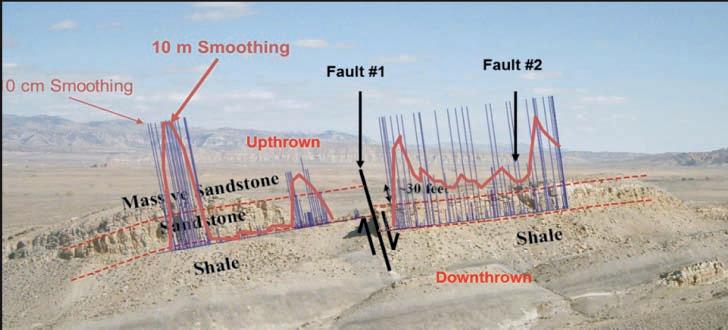
In the sedimentary section, the fluids available to the failure mechanism are either water or hydrocarbons. Any other fluids that may be available are in such small quantities as to be insignificant. Water is an incompressible fluid and is an excellent source to create elevated fluid pressures, especially in systems that form in poorly lithified rock, as well as systems that are undergoing compaction. In these systems, the compaction process results in elevated fluid pressures conducive to failure. In active deformations systems that are propagating through older strata or lithified rock, the use of water as the principal fluid source becomes problematic as the amount of water is limited and the system has compacted in a manner that does not favour the easy transfer of water from one horizon to another. In these cases the source of the fluid is more likely to be hydrocarbons that form as the strata are buried and heated.
There are many components to fracture analysis. To fully describe the fracture network it is necessary to describe the orientations of the fractures, the connectivity of the fractures, the extent and aperture of the fractures, and their ability to conduct fluid (both quantity and type). The intensity (or density) of the fracture system is also important, both in terms of fluid conductivity and in terms of fluid storage. Ultimately, what is of greatest use to the reservoir analyst is how the fractures hydraulically connect the reservoir to the well bore.
It is possible to estimate the connectivity of the fracture system within the reservoir using a stereonet. Plotting the poles of the fractures on a stereonet will give insight into the connectivity of the fracture system.
If connectivity describes how well fractures intersect, there also needs to be a method of determining how many fractures exist within a given volume of rock. The term fracture intensity refers to the sum of the area of all fracture planes in a given volume
of rock. Typically, scan-line analysis is used to approximate the fracture intensity, where the number of fractures intersected by a scan line of set length gives a number of fractures per unit distance.
The advantage of scan-line analysis is that it creates a mathematical function that can be analyzed using a variety of statistical tools. Summing algorithms and frequency analyses are effective tools and give quantitative results that may be compared to productive capabilities. The technique lends itself to comparison within a reservoir, and also comparison from one reservoir to another. An advantage to the technique is that it has statistical predictive capabilities. This technique can be expanded to look at fracture systems in planes. This moves the analysis from one-dimensional line analysis to two-dimensional planar analysis.
Trend analysis, relative amplitude comparison, statistical spreads may all be determined using this technique. The tool is particularly strong for the analysis of curvature and coherency in 3D seismic data volumes. What is of particular interest to the reservoir analyst is that these values can be compared directly to well data and the effectiveness of the drilling program may be assessed.
BIOGRAPHY
Paul MacKay received a B.Sc. (honours, geological sciences) from Queen’s University in 1980 and a Ph.D. from the University of Calgary (1991). He initially worked for Amoco Canada then moved to Morrison Petroleums, Northstar Energy, and Devon Canada before beginning an international consulting practice. He is currently President of Shale Petroleum Ltd. His expertise is in fracture systems and petroleum exploration and development in structurally complex reservoirs. He teaches field courses in Structural Geology/Geophysics in the Canadian Rockies and field seminars on Fractured Reservoirs based in Wyoming. He is an Adjunct Professor in the Department of Geology and Geophysics at the University of Calgary.

As the industry leader in visualization, modeling and data transformation technologies, Paradigm lets you move seamlessly between imaging, characterization, interpretation and modeling – without compromising data or losing accuracy. Get full, detailed views into your prospects and reservoirs with new high-fidelity voxel viewing. And make better decisions based on clear and compelling data. Get compelling results. Find out how at pdgm.com




SPEAKERS
Dave Birnie, P. Geoph. President, GEOSEIS Inc.
Decong Yu, P. Geol. Manager Geological Services, GEOSEIS Inc
12:00 Noon
Wednesday, April 6
Nexen Plus 15 Conference Centre Nexen Annex Building 7th Ave. & 7th Street SW Calgary, Alberta
The Equatorial Atlantic Upper Cretaceous basin floor fan play, offshore Ghana, has been one of the hottest exploration play trends over the 2007-2011 period as a result of world-class discoveries offshore (Jubilee, Odum, Jubilee East, Tweneboa, Sankofa, Dzata, Enyenra, Teak), and will continue to be a focus for the foreseeable future. Multiple world-class opportunities totalling billions of barrels have been found within and along the continental margins of Eastern Ghana in water depths from 800 to 1,900 meters where Cretaceous reservoirs are charged by oil migrating from mature oil-prone Type 2 Albian to Cenomanian source rocks. Source rocks are mature in the deepwater area due to burial depth and high geothermal gradients typical of oceanic / stretched continental margin crust.
Three sedimentary basins, from west to east, the Tano, the Saltpond, and the Keta Basins, are within, or partially within, Ghana’s offshore territory. The three basins share common tectonic origin in that they are all wrench-modified basins. The stratigraphy of each basin is unique due to basin scale and their positions in the
wrench system that resulted in the birth of Atlantic. The Tano and Saltpond basins are bounded by the Romanche Fracture Zone (Transform Fault Zone), a dividing line between continental crust and oceanic crust as it extends west into deep water Cote d’Ivoire. The Tano and Keta basins are considered Cretaceous basins with thick Cretaceous section while the Saltpond Basin is defined as a Paleozoic basin with very thin Cretaceous section. The tectonic evolution of the wrench system controlled the depositional environments and the petroleum systems in the area.
To date, announced world-class discoveries (100’s of millions to billions) in Eastern Ghana are all in the deep water Tano Basin within reservoirs of the Upper Cretaceous (turbidite channel sands). Small discoveries (10’s of millions) in the shallow water (Saltpond, North Tano, South Tano, Ebony) in the Saltpond and Tano Basins are within reservoirs of the Paleozoic or Lower Cretaceous sandstones. The size of recent discoveries by ENI-Vitol (Sankofa-1) and Lukoil-Vanco (Dzata-1) are not yet known. Exploration-appraisal drilling success in Eastern Ghana’s offshore since Jubilee’s discovery in 2007 has been high. Jubilee Phase 1, discovered by Kosmos and Tullow in 2007, went on production in late November 2010, Production will ramp up from the current ~50,000 BOPD to ~120,000 BOPD by June 2011.
The tectonic evolution of these basins can be divided into three stages (Mascle, 1988):
1. Pre-transform intracratonic stage (Ordovician-Triassic),
2. Faulting / syn-transform stage (Jurassic-Early Cretaceous), and
3. Post-transform stage (Late Cretaceous-present).
The stratigraphic differences during the Post-transform stage between the three offshore basins are dramatic. Target exploration fairways in the Cretaceous are a function of available gentle continental slopes offering accommodation space together with available sediment source and transport systems for good quality reservoir sands from the adjacent continental areas.
Four major petroleum systems are interpreted to exist offshore Ghana:
1. The Lower Paleozoic petroleum system with Devonian source rocks
and Devonian and Carboniferous (Saltpond Field) to Lower Cretaceous reservoirs.
2. The Lower Cretaceous petroleum system with Lower Cretaceous source and reservoirs (South and North Tano Fields) including a mixed source rock of lacustrine sediment deposited during the very beginning of the separation of Africa and South America plates, Middle Albian terrestrial gas-prone source rocks, and Upper Albian marine transgressive oil-prone source rocks
3. The Cenomanian-Maastrichtian petroleum system with CenomanianTuronian open marine oil-prone source rocks and turbidite sand reservoirs (Jubilee Field).
4. The Tertiary petroleum system with Tertiary source and reservoirs (the Keta deep basin floor).
Exploration plays vary from large stratigraphic turbidite channel sand and slope fan sand traps (Jubilee, etc.), faultingrelated structural traps in Albian and Aptian units (North and South Tano), fault block traps in the Paleozoic succession (Saltpond), inversion structural traps in deep water, and basin floor fan stratigraphic traps in ultra-deep water.
Ghana promises to be a focus for new offshore drilling activity for the near future.
Dave Birnie is a senior Canadian oil and gas exploration consultant who currently serves as President of GEOSEIS Inc., an oil and gas geological, geophysical, data, and technical services company he co-founded in 1997 (www. geoseis.ca). Mr. Birnie also supports GEOSEIS’s geological and geophysical consulting practice, which specializes in international exploration projects, both onshore and offshore. Recent projects include assignments in India, Madagascar, Yemen, Guyana, and the deep water Gulf of Mexico. Dave has a record of successful hydrocarbon discovery in Canada, Indonesia, Egypt, and India. He keeps current and active as a practicing consulting geologist/ geophysicist who works together with clients and available project data to develop practical, fact-based, and cost-effective solutions.
Earlier in his career Mr. Birnie held progressive technical and supervisory responsibilities with Chevron Corporation in Canada, the U.S., and Indonesia (1974-1995). He worked for 16
years as a geophysicist/geologist followed by six years in a planning and economic evaluation role. In Canada during the late 1980s he started up a geophysics team to support Chevron’s development geology group and then subsequently served as leader/supervisor of the West-Central Alberta exploration group.
Mr. Birnie is a G&G exploration specialist who typically gets involved in special studies to try and do new and different things to get better data for interpretation and risk reduction in the oil and gas business. Mr. Birnie has also been involved in the process of rethinking technology strategies to add value to the Upstream oil and gas business.
Mr. Birnie is an expert in exploration methodologies, exploration risk assessment, and exploration resource probabilistic modeling (size-of-the-prize modeling). He has taught industry courses on exploration management and reserves assessment and modeling.
Mr. Birnie holds Bachelor and Master degrees in Geological Engineering and Geophysics respectively from Queens University (1972) and the University of British Columbia (1976). He also holds a Master of Business Administration degree, specializing in Finance (1981). Mr. Birnie is a registered APEGGA Professional Geophysicist in Alberta, as well as a member of CSEG, CSPG, and SEG.
There is no charge. Please bring your lunch. The facilities for the talk are provided complimentary of Nexen, coffee by IHS and refreshments Geochemtech Inc. For further information or if you would like to give a talk, please contact Bob Potter at (403) 863-9738 or mail to: ropotter@telusplanet.net or Trent Rehill at (403) 606-6717 or email to: trehill@ kulczykoil.ca. Or visit our new Face Book page (“CSPG International Division”).









Dielectric dispersion measurements accurately determine heavy oil volume in shaly sands with variable water resistivity—instead of relying on estimated parameters or waiting months for laboratory core analysis.
Get the full story about this and other case studies at www.slb.com/ds
SPEAKER
Wouter Bleeker Geological Survey of Canada
12 noon to 1pm Thursday, April 7, 2011
Location: Please note: new venue Room B, +30 level
Western Canadian Place 707-8th Avenue S.W.
Almost a century after Wegener’s groundbreaking proposals—that the present continents were the dispersed fragments of a former supercontinent, Pangaea—and nearly five decades after the “plate tectonic revolution” of the 1960s, an amazingly detailed picture has emerged of the kinematics and dynamics of our planet, allowing integration and synthesis of much of the younger geological record.
A much less detailed picture exists for the pre-Pangaea world, although a substantial body of evidence suggests that there may have been previous supercontinents (Rodinia, Nuna). Break-up of these previous (super)continents has severely fragmented and dispersed the older geological record,
thus rendering a full synthesis of the older geological record difficult. For instance, much of the Archean to Paleoproterozoic geological record is contained in about 50 crustal fragments or cratons scattered around the globe, each with their own literature. As a result, many of the Archean cratons have been commonly viewed and studied as individual entities, yet they clearly represent mere fragments of larger tectonic systems. Hence, only a full paleogeographic reconstruction of all the pieces of preserved continental crust will allow us to see the full picture and synthesize the entire geological record.
We think there is sufficient high-quality information stored in the system to achieve meaningful reconstructions back to ca. 2.7 Ga, and in isolated cases even further back in time, thus providing the ultimate ground truth for models of long-term dynamical behaviour of our planet. With a concerted effort, this could be achieved in a surprisingly short time and at only a moderate cost. The strongest constraints will not come from messy basement geology or other datasets that are fundamentally “fuzzy” in nature. Instead, much of the pertinent information, often with a clear “yes or no” type quality, is contained in the record of large igneous provinces (LIPs) and their plumbing systems of regional diabase dyke swarms. This is because LIPs and their dyke swarms: 1) are naturally associated with break-up of pre-existing landmasses; 2) are emplaced in short pulses (typically 1 Myr or less); 3) have
Sponsored by
very large footprints (300-3,000 km); 4) are relatively insensitive to uplift (vertical dykes); 5) contain rich geometrical information and yield superior “piercing points”; and 6) because they are the target rocks of choice for high-quality paleomagnetic studies, often yielding stable results that can be tested for their primary nature.
Significant advances in all aspects of U-Pb geochronology, together with the realization that almost all mafic rocks contain baddeleyite (ZrO2), now allow us to date the short bursts of LIP magmatism, with both precision and accuracy and at the natural time resolution of such events. Multiple precisely dated events provide, in effect, magmatic “barcodes” that can be compared between cratons and terranes, thus identifying original “nearest neighbours”. The inherent geometrical information can constrain relative craton configurations, while primary paleomagnetic information can further constrain azimuthal orientation, latitude, and relative longitude. Using this approach, we have launched a 5-year project, sponsored by an industrygovernment-university consortium, to date all LIP events and their dyke swarms around the globe and produce robust reconstructions back to 2.7 Ga (www. supercontinent.org).
For additional information on CSPG Structural Division talks, please contact Darcie Greggs, Darcie.Greggs@ huskyenergy.com





and paleoclimate of the
Formation (Alberta): using ancient soils to study the effect of environmental changes on faunal turnover in a dinosaur-dominated terrestrial ecosystem
SPEAKER Annie Quinney University of Calgary
7:30 PM
Friday, April 15th, 2011 Mount Royal University, Room B108
A BSTRACT:
The Horseshoe Canyon Formation (HCFm) is a well-known dinosaur-bearing formation of Alberta that records a time-period near the end of the Age of the Dinosaurs. The HCFm consists of five informal subunits marking significant lithologic changes (Eberth, 2004). At the base of Unit 3 of the HCFm, there is a distinct turnover in the species of dinosaurs, which includes the appearance of Parksosaurus, Hypacrosaurus, and Saurolophus as well as the disappearance of ceratopsians and a significant decrease in turtle diversity. This turnover may be associated with climatic changes that caused drying and cooling during that time (Eberth et al., 2001; Brinkman and Eberth, 2006), Although it is often inferred that climate and environmental change are responsible for changes in dinosaur fauna near the end of the Cretaceous, this hypothesis remains untested. Paleoclimates and paleoenvironments can be inferred through the study of paleosols (ancient soils) that are preserved in the rock record (Retallack, 2001). Paleosols occur throughout the HCFm and close examination of lithological and geochemical features in these ancient soils will provide information on the
Sponsored by
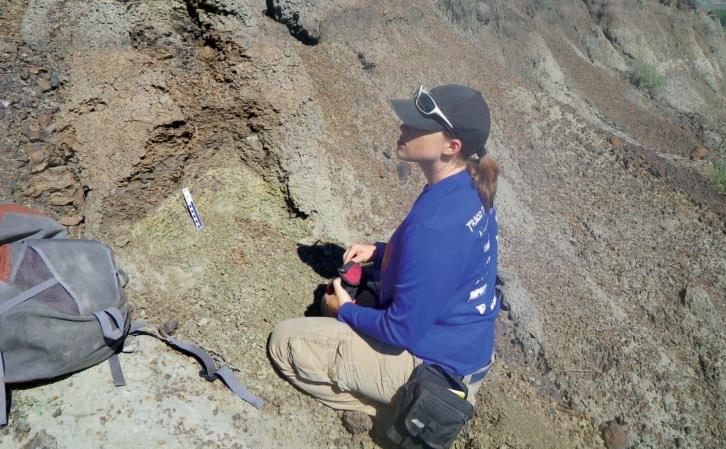
environments and climates that prevailed between 73 and 69 million years ago.
The objective of this research is to establish if the known diversity changes in dinosaur and other vertebrate faunas of the HCFm coincide with environmental and/or climatic changes. This objective is achieved by establishing a paleoenvironmental and paleoclimatic framework for the entire HCFm, inferred from the study of paleosols. The stratigraphic occurrence of paleoclimatic and/or paleoenvironmental changes within the HCF will then be compared to known faunal changes in order to determine if episodes of faunal change coincide with episodes of environmental change. If positive, this study will be the first to provide evidence that climatic change affected dinosaur faunas in Alberta during the Late Cretaceous.
This talk will discuss the observations and results achieved thus far in the project.
Eberth, D. A. 2004. A revised stratigraphy for the Edmonton Group (Upper Cretaceous) and its potential Sandstone Reservoirs. Preconference Field Trip #7, CSPG-CHOA-CWLS Joint Conference, 44p.
Eberth, D. A., Currie, P. J., Brinkman, D. B., Ryan, M. J., Braman, D. R., Gardner, J. D., Lam, V. D., Spivak, D. N., and Newman, A. G. 2001. Alberta’s dinosaurs and other fossil vertebrates: Judith River and Edmonton Groups (Campanian-Maastrichtian). In: Mesozoic and Cenozoic Paleontology in the Western Plains
and Rocky Mountains, C. L. Hill (ed.). Museum of the Rockies Occasional Paper, no. 3, p. 47-75.
Brinkman, D. B. and Eberth, D. A. 2006. Turtles of the Horseshoe Canyon and Scollard Formations – Further evidence for a biotic response to late Cretaceous climate change. Fossil Turtle Research, no. 1, p. 11-18.
Retallack, G. J. 2001. Soils of the past, an introduction to paleopedology (2nd ed.). Oxford: Blackwell-Synergy.
Annie Quinney is currently a M.Sc. student in the Department of Geoscience at the University of Calgary, where she completed her B.Sc. in 2008. Her undergraduate thesis focused on the bite force and feeding behaviors of extant and extinct predators, including canids, felids, and hyaenids, with a secondary focus on the extinct sabre-toothed cat Smilodon. For her M.Sc., she switched her focus to examine ancient soils as an indicator of past climates and paleoenvironmental change. She hopes to complete her M.Sc. by September, 2011.
This event is jointly presented by the Alberta Palaeontological Society, Mount Royal University, and the CSPG Palaeontology Division. For details or to present a talk in the future please contact CSPG Paleo Division Chair Philip Benham at 403-691-3343 or programs@albertapaleo.org. Visit the APS website for confirmation of event times and upcoming speakers: http://www. albertapaleo.org/
oil and
–continuous exploration successes, increasing production and geopolitics
SPEAKER
Tako Koning
Manager – Angola Business Development
Gaffney, Cline & Associates, Luanda, Angola
12:00 Noon
Wednesday, April 20
Nexen Plus 15 Conference Centre
Nexen Annex Building
7th Ave. and 7th Street SW
Calgary, Alberta
Sponsored by

West Africa continues to experience new oil and gas discoveries and also continues to provide increasingly more oil and

gas production to world markets. Oil production from West Africa is currently averaging:



This presentation is an overview of the current oil and gas activities in West Africa with a focus on recent discoveries and new exploration plays. Also reviewed are some of the strategies of the region’s players, including the established oil and gas companies, but also the new players.
The global “golden triangle” of deepwater exploration and production consists of the Gulf of Mexico, Brazil, and West Africa. Indeed, West Africa has been described as “the world’s deepwater crude oil factory” in the November, 2010 issue of World Oil magazine (deepwater is defined as >500 meters / 1,500 feet water depth and ultradeepwater as >1,500 meters / 5,000 feet water depth).
The two mainstay areas in West Africa have been Angola and Nigeria. Angola continues to experience significant oil discoveries in the deepwater Miocene and Oligocene turbidites deposited by the ancestral Congo River. Approximately two-thirds of Angola’s oil production is from deepwater oil fields. A historic landmark occurred in January, 2011 when 11 deepwater to ultradeepwater blocks with pre-salt oil potential in the Kwanza Basin were awarded to a number of operators, including BP, Cobalt, Repsol, Total, ENI, ConocoPhillips, and Statoil. These blocks have geological similarities to the giant pre-salt discoveries made in the Santos Basin of Brazil, including the Tupi oil discovery with estimated reserves of 6.5 billion barrels. Public domain (published) seismic lines over Tupi and the Kwanza Basin will be presented.
Nigeria continues as West Africa’s top oil producer and continues to be geologically attractive, but security problems hinder exploration and production. Although the oil and gas potential of West Africa was historically viewed as ending around the Nigeria Delta, recent oil discoveries in Ghana and Sierra Leone have opened up a new fairway extending some 1,000 km westwards and northwards. In Ghana, the Jubilee oil field, with estimated P50 reserves of 1.8 billion barrels, was discovered in 2007 and is now on production at 55,000 barrels of oil per day and will be producing at 120,000 barrels of oil per day by the middle of this year. This is providing a much-needed boost to the economy of Ghana. Additional oil discoveries include Odum, Owo, and Tweneboa, which consist of Upper Cretaceous basin floor fan deposits. Most recent has been the announcement by Kosmos Energy of the Teak oil discovery, located 5 km northeast of the Jubilee field. The Teak discovery well, located in 870 meters of water depth, intersected 73 meters of net oil and gas pay in high-quality sandstones of Campanian and Turonian age.
In Sierra Leone, the Venus oil discovery was drilled in 2009 in 1,800 meters water depth by Anadarko and was followed by the Mercury oil discovery in 1,600 meters water depth in 2010. This has opened up a trail of prospective geological structures running through Ivory Coast, Liberia, and to Sierra Leone. Noteworthy has been Chevron obtaining three deepwater blocks in Liberia in 2010. Countries like Sierra Leone and Liberia are amongst the poorest countries in the world. These fragile countries need the economic benefits that oil discoveries can provide, but they also
need good governance. If these countries properly manage the oil wealth and avoid the “resource curse,” then these recent oil discoveries can help raise the standard of living and benefit everyone.
The perception by many is that West Africa is the playing field of the large international oil companies; however, medium-size independent companies like Tullow Oil and Anadarko have been very successful in the area. Indeed, small companies have also been successful, including USA explorer Hyperdynamics, which has obtained a large acreage position in the deepwater off Guinea and USA explorer ERHC, which has numerous blocks in the deepwater off Sao Tome and Principe.
The USA currently imports about 9.0 million barrels of oil per day. About 1.4 million barrels of oil per day of the USA’s oil imports (equivalent to 15%) are from West Africa. In order to lessen its dependence on imports from the Middle East, the USA would like to obtain more oil from West Africa; however, there will be increased competition for the oil, especially from countries with rapidly expanding economies including China and India.
Tako Koning is Holland-born but Albertaraised with a B.Sc. in Geology from the University of Alberta and a B.A. in Economics
from the University of Calgary. Since joining the oil industry forty years ago he has been employed by Continental Laboratories, Texaco (retired after 30 years of service), Tullow Oil, and currently is a consultant to the USA-UK consulting company of Gaffney, Cline & Associates. He has lived and worked overseas for over 25 years in Indonesia, Nigeria, and Angola. In Angola, he is also volunteer Residential Representative for Yme Foundation, a Norwegian humanitarian organization involved with drilling for clean drinking water in southern Cabinda, near the border with the Democratic Republic of Congo (DRC).
There is no charge. Please bring your lunch. The facilities for the talk are provided complimentary of Nexen, coffee by IHS and refreshments Geochemtech Inc. For further information or if you would like to give a talk, please contact Bob Potter at (403) 863-9738 or mail to: ropotter@telusplanet.net or Trent Rehill at (403) 606-6717 or email to: trehill@ kulczykoil.ca. Or visit our new Face Book page (“CSPG International Division”).

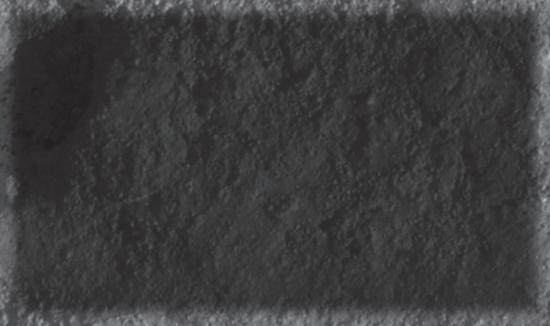














President
226CopperfieldBlvd.S.E. Calgary,ABT2Z4R6 Tel4037260666 Fax4034515380 Cell4038192516
farhat@sableconsultants.com SABLECONSULTANTS.COM
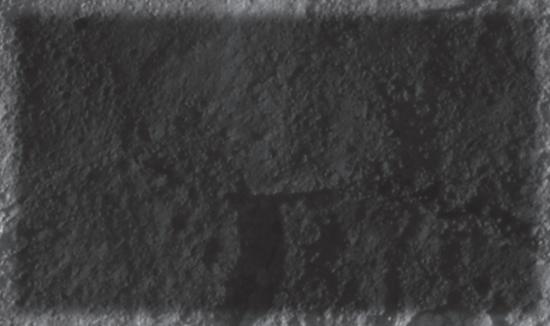

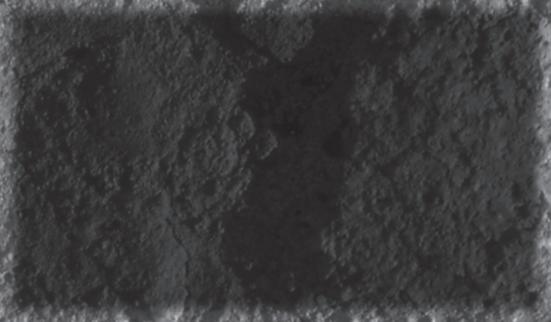
| By E. R. (Ross) Crain, P.Eng.
Unicorns are beautiful, mythical beasts, much sought after by us mere mortals. The same is true for petrophysical models for unconventional reservoirs. This is the sixth in a series of review articles outlining the simple beauty of some practical methods for log analysis of the unusual.
Tar sands (oil sands, bitumen sands) are mined or depleted by steamassisted gravity drainage (SAGD) or in-situ fire floods. In all situations, an adequate reservoir description is needed to assess the economics and progress of any project. A conventional shaly sand analysis using complex lithology porosity models is the foundation for the work. A shaly sand water saturation equation, such as the Simandoux model, is also needed.

The best tar sands are clean, mediumto coarse-grained, unconsolidated sands. However, they may be interbedded with finer, siltier, and shalier sands or bounded by lower quality reservoir rock. The log analysis needs to describe these variations, especially laterally continuous barriers to vertical flow of steam and oil movement.
The fluid column can be more complicated than conventional reservoirs. Here are some possibilities:
1. bitumen with or without bottom water,
2. top water over bitumen with or without bottom water,
3. gas over bitumen with or without bottom water,
4. gas over top water over bitumen with or without bottom water,
5. any of the above with gas distributed unevenly in the main bitumen zone.
Since these sands are often shallow, the gas crossover on the density neutron log is quite large and can be used as a measure of the reservoir volume filled with gas. Comparison to (1 - Sw) gives the residual bitumen volume in the gassy zones.
Tar in carbonates is also extractable with
SAGD, fire floods, or solvent floods. Gas is usually less of an issue because there is less likelihood of biogenic gas generation, but gas caps may exist in some plays.
Tar assay data from core analysis is often presented in terms of mass (weight) fraction (or percent) and sometimes also as volumes. Log analysis results are usually in volume fractions. Comparison between log and core results needs some extra math compared to conventional oil and gas evaluations. Further, net pay is often determined by a tar mass fraction cutoff instead of porosity and water saturation.
First let’s look at the gas problem. If there is no gas crossover, you can skip this section. The conventional equation for porosity in a gas sand is: 1. PHIe = ((PHInc^2 + PHIdc^2) / 2) ^ (1 / 2)
This equation is accurate enough for most gas zones, but in very shallow gas sands, it will underestimate porosity. The above equation must be replaced by:
2. PHIe = ((PHInc^x + PHIdc^x ) / 2) ^ (1 / x)
Where:
x is in the range of 2.0 to 4.0, default = 3.0 for very shallow gas, 2.0 for conventional gas.
(Continued on page 20...)

PHIdc and PHInc are shale-corrected values of density and neutron porosity respectively.
The exponent x is adjusted by trial and error until a good match to core porosity is obtained.
After shale volume and porosity have been calculated, water resistivity can be found in a bottom water zone below the tar, as these rarely has any residual tar. Rw may vary somewhat in the tar sand interval and this can be adjusted if necessary by comparing calculated tar mass with core tar mass in non-gassy, relatively shale-free, intervals. Water saturation is then calculated from a shale-corrected model such as Simandoux.
Many, but not all, gas zones related to tar sands have some residual tar. Hydrocarbon saturation is partitioned between bitumen and gas by the following method:
3. Vwtr = PHIe * Sw
4. Vhyd = PHIe * (1 – Sw)
5. GasTarRatio = Max(0, Min((1 –TARmin), (PHIDc – PHINc) / MA x_ xOVER))
6. Vgas = GasTarRatio * Vhyd
7. Vtar = (1 – GasTarRatio) * Vhyd
Where:
TARmin = minimum tar volume in gas zone as seen on core analysis (could be zero).
MA x_xOVER = maximum density neutron crossover in a gas zone (fractional).
TAR MASS FROM LOGS
Tar weight is calculated from log analysis as follows:
8. WTtar = BVtar * DENSH y
9. WTshl = Vsh * DENSSH
10. WTsnd = (1 - Vsh - PHIe) * DENSMA
11. WTwtr = BVwtr * DENSW
12. WTrock = WTtar + WTshl + WTsnd + WTwtr
TAR MASS FRACTION
13. Wtar = WTtar / WTrock
14. WT%tar = 100 * Wtar
Where:
TARmin = minimum tar volume in gas zone as seen on core analysis, could be zero.
MA x_xOVER = maximum density neutron crossover in a gas zone (fractional).
Vxxx = volume fraction of a component.

Figure 3. Large gas crossover (shaded area) in a tar sand. Note that core porosity (black dots) is close to density log porosity, suggesting that conventional equations for gas corrections may not work well. Only a few tar sands have this problem. Porosity scale is 0.60 to 0.0 left to right.
WTxxx = weight of a component (grams or Kg).
Wxxx = mass fraction of a component. WT%xxx = weight percent of a component.
Typical densities are DENSMA = 2,650, DENSW = DENSH y = 1,000, DENSSH = 2,300 kg/m3.
This is the only way to rigorously calculate Tar Mass. Other equations have been used, such as the one shown below, but are less accurate, since shale volume is not explicitly enumerated:
99. TARmassfrac = ((1.0 - Sw) * Phie * DENStar) / (DENSrna * (1.0 - Phie))
In equation 99, DENSma is a computed result from the log analysis, and is usually wrong when gas is present. It hides the shale correction term and individual rock and fluid parameters cannot be adjusted. I strongly recommend that this “simplified” version be avoided.
It should be noted that core data is usually derived from a summation of fluids process, such as Dean-Stark method, so the porosity from core matches total porosity better
Figure 4. Comparison of tar mass from log analysis (solid line) with tar mass from Dean-Stark core analysis (dots). Tar mass scale is 0.30 to 0.00. Zone opposite Star is gas with residual tar; above and below are tar with no gas.


Figure 6. Example of Dean-Stark porosity (dots) showing that it is less than total porosity from logs (black curve) due to incomplete drying of clay. Trying to match log porosity directly to core may be futile in many cases. Comparison of tar mass is the best criteria. Porosity scale is 0.50 to 0.00.
than effective porosity. The same goes for water saturation. That’s why we use tar mass and not porosity and saturation to calibrate log analysis to core data.
Tar mass from log analysis is plotted along with tar mass calculated from core analysis data, on the depth plots to show the match between log analysis and core data results. The match between log analysis

tar mass, porosity, and saturation with corresponding core data is usually excellent except in the very shaly, non-pay intervals, mostly because the core data provided ignores shale and its effect on net grain density. The match in zones with high gas saturation varies in quality due to the inherent inaccuracy in the gas/tar partitioning calculation on the log analysis.
This method is used in poorly consolidated rocks such as tar sands and involves disaggregating the samples and weighing their constituent components. Samples are usually frozen or wrapped in plastic to preserve the contents during transport. In the lab, the still-frozen cores are slabbed for photography and description; samples are then selected and weighed.
Samples are then heated and crumbled to drive off water, and weighed again. The weight loss gives the water weight. Solvents
are used to remove oil or tar. The sample is weighed again and the weight loss is the weight of oil. The matrix rock is separated into clay and mineral components by flotation, dried and weighed again, giving the weight of clay and weight of the mineral grains.
15. WTwtr = WTsample - WTheated
16. WTtar = WTheatedWTminerals&clay
By dividing each weight by its respective density and adjusting each result for the total weight of the sample, the volume fraction of each is obtained.
17. VOLwtr = WTwtr / DENSwtr / WTsample
18. VOLtar = WTtar / DENStar / WTsample
19. PHIcore = VOLwtr + VOLtar
Assuming clay-bound water is driven off by heating and drying, then PHIcore equals total porosity. From comparison to log analysis results, it appears that some claybound water remains in many cases, so PHIcore lies between total and effective porosity from log analysis.
TAR MASS FROM CORE LISTINGS
If not provided on the core listing, the equivalent value of tar mass from core analysis is derived from porosity, oil saturation, and an assumed oil density:
20. Wtar = PHIcore * Star * DENStar
21. Wwtr = PHIcore * Swtr * DENSwtr
22. Wrock = (1 – PHIcore) * GR_ DENScore
Where:
Star = tar volume relative to pore volume.
(Continued on page 22...)
0.2730.2980.7020.0810.1922.6500.0811.9270.1912.1990.0370.0870.876
Table 1. When saturations and porosity are known (blue shading), all other terms can be calculated. GR_DENS must measured or assumed and DENSwtr and DENStar are usually assumed to be 1,000 Kg/m3. Some core analysis reports do the math for you, some do not.

24. Swtr = Wwtr / (PHIcore * DENSwtr)
Or:
25. Swtr = 1.00 - Star
Where:
Star = tar volume relative to pore volume.
Swtr = water volume relative to pore volume.
PHIcore = volume of water + valume of tar.
Wtar = tar mass fraction.
Wwtr = water mass fraction.
Permeability is calculated from the following equation, based on data from the core analyses.
26. Perm = 10 ^ (HPERM * PHIe – JPERM)
Vertical permeability is especially important in SAGD operations, and similar equations can be developed by plotting core porosity against vertical permeability. Both horizontal and vertical perm can be generated from log analysis porosity and plotted versus depth. An alternate approach is to do a regression of Kv versus Kh.
A bitumen pay flag is calculated with a log analysis tar mass cutoff, usually between 0.050 and 0.085 tar mass fraction. A gas flag should also be shown on the depth plots where density neutron crossover occurs on the shale corrected log data.
Tar in place is calculated from:
27. TAR = SUM (Wtar * DENSH y * THICK) * AREA
(...Continued from page 21)
Swtr = water volume relative to pore volume.
PHIcore = volume of water + valume of tar.
Wtar = tar mass fraction.
WTwtr = water mass fraction.
WTrockcore = rock mass fraction.
Since GR_DENScore represents a mixture of quartz and shale, this value should vary with shale volume. However, shale volume is never reported on core analysis,
so the composite grain density from the rock sample is used. If grain density is not recorded in the core analysis, we must assume a constant of 2,650 Kg/m3 or lower.
If not provided on the core listing, the equivalent value of tar volumes from core analysis are derived from porosity, tar mass fraction, and an assumed oil density:
23. Star = Wtar / (PHIcore * DENStar)
Where:
AREA = reservoir area (m2). THICK = rock thickness (meters). TAR = tar in place (tonnes).
Wtar = tar mass fraction (fractional). DENSH y = density of bitumen (g/cc).
If the oil equivalent in barrels or cubic meters is needed, the standard equation can be used:
28. OOIP = KV3 * SUM(PHIe * Star * THICK) * AREA / Bo
Where:
KV3 = 7,758 bbl for English units.
KV3 = 1.0 m3 for Metric units.
AREA = spacing unit or pool area (acres or square meters).
OOIP = oil in place as bitumen (bbl or m3).
Recovery factor for surface mining operations is very high, maybe 0.98 or better. For SAGD, RF = 0.35 to 0.50 are used. Since we can’t keep the steam away from the shaly sands, recovery will vary with the average rock quality in a SAGD project. Since water has a very high latent heat, the volume of water to be steamed is as important to the economics as the volume of bitumen. High water saturation is bad news here, just as in conventional oil.
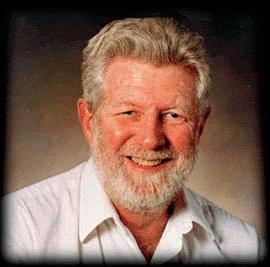
E. R. (Ross) Crain, P.Eng. is a Consulting Petrophysicist and a Professional Engineer with over 45 years of experience in reservoir description, petrophysical analysis, and management. He has been a specialist in the integration of well log analysis and petrophysics with geophysical, geological, engineering, and simulation phases of oil and gas exploration and exploitation, with widespread Canadian and Overseas experience.
His textbook, “Crain’s Petrophysical Handbook on CD-ROM” is widely used as a reference to practical log analysis. Mr. Crain is a Honourary Member and Past President of the Canadian Well Logging Society (CWLS), a Member of Society of Petrophysicists and Well Log Analysts (SPWLA), and a Registered Professional Engineer with Alberta Professional Engineers, Geologists and Geophysicists (APEGGA).
•
•
•









Innovative Software that is Comprehensive, Fast, Flexible and Easy-to-use.
• Predict pre-drill pressure & temperature
• Identify sweet spots
• Thermal maturity distribution
• Hydrocarbon migration pathways
• Segregate & prioritize prospective areas























































The Tournament would like to thank the following 2010 sponsors:
Diamond Sponsors
geoLOGIC Systems
Schlumberger of Canada
Emerald Sponsors
GeoStrata Resources Inc.
IHS Energy
Macquarie Tristone Capital Advisors
AGAT Laboratories
Athabasca Oil Sands Corp.
Baker Atlas Wireline
Belloy Petroleum Consulting
CB Securities
Divestco Inc.
Energy Navigator Inc.
Fugro Data Solutions Canada Inc.
GLJ Petroleum Consultants
Halliburton
Arcis Corporation
ATB Financial
ConocoPhillips Canada
Continental Laboratories Ltd.
Deepwell Energy Services
Devon Canada Corporation
Knowledge Energy Inc.
MD Totco Nov. Wellsite Gas Watch
Barry Rypien
Gabel Energy Inc.
Martin Quinn
Candian Stratigraphic Services
Crow River Resources
Little Rock Document Services
RBC Dominion Securities
Weatherford Canada Partnership
Wildcat Scouting Services (1991) Ltd.
M J Systems
Painted Pony Petroleum Corp.
Pason Systems Corp.
ProGeo Consultants
RECON Petrotechnologies Ltd.
RPS Energy
Ryan Energy Technologies
Sproule Associates Ltd.
West Canadian
Pajak Engineering Ltd.
Petrocraft Products Ltd.
Polaris Resources Ltd.
Regent Resources Ltd.
ReSurge Ltd.
Rigsat Communications
Sample Pro Ltd
Van Helden Agencies Ltd.
Montane Resources Ltd.
Trivision Geosystems
Hydro-Fax Resources Ltd. San Dago Resources Ltd.
The CSPG Classic Golf Tournament has incorporated fundraising for charity as part of the event. In 2011 the charities selected are the Salvation Army Agape Hospice and the CSPG Education Trust Fund.
NAME:
SPOUSE’S NAME: COMPANY:
ADDRESS (Bus.):
POSTAL CODE:
TELEPHONE: CELL PHONE:
E-Mail:
All contestants are required to have a photo in the Golfer’s Photo Roster. Former contestants who have submitted a photo in the past need not do so again. Handicap / Golf Index __________________ or Average of best three 18-hole scores in past 2 years:______________
Registration Fee: Includes three rounds of golf with power cart; Paid driving range; Door prize draws; Skill prizes; BBQ (at Elbow Springs) and Awards Banquet (Calgary Petroleum Club) both for you and your guest.
Cost: Tournament Fee $428.50 GST $21.45
Total if paying by cheque $449.95
To assist the Entertainment Committee with budgeting, please indicate if you plan to attend the two major social events of the tournament:
Wednesday Barbecue: Self: Yes q No q Guest: Yes q No q
Friday Awards Banquet: Self: Yes q No q Guest: Yes q No q
Social Events Cancellation or Additions require 72 hours notice before the event. Please contact Bob Earle by phone: (403) 803-3744 or email: cspgclassicgolf@gmail.com
Make Cheques Payable To: CSPG (Classic Golf)
Send Entries To: CSPG Classic Golf Tournament 600, 640-8th Avenue S.W. Calgary, AB, T2P 1G7
* Please photocopy your entry form and cheque before mailing.
Last day for refund requests: June 1, 2011.
Mail/Courier Registration: Print this registration Form (http://www.cspg.org/events/events-social-classicgolf.cfm) send to CSPG Office with cheque.
| By C. R. Clarkson1, R. Aguilera2, P. K. Pedersen1, R. J. Spencer1,3
1Department
of Geoscience,
University of Calgary, 2Schulich School of Engineering, University of Calgary, 3Alberta Innovates
Technology Futures
To optimize field development in shale gas reservoirs, a detailed understanding of rock, reservoir, fluid, and hydraulic fracture properties must first be gained through a detailed reservoir and hydraulic fracture characterization program, and this information used to populate models for forecasting future production under different scenarios (well spacing, fracture spacing, well orientation, hydraulic fracture design, etc.). Ultimately economic factors, with metrics driven by the companies involved and their shareholders, along with regulatory constraints, will dictate the course of development of these plays. To guide our discussion of each step in the field development optimization process, we have provided one possible workflow that can be used (Figure 1). The evaluation process starts at small scales (core or finer) and proceeds to progressively larger scales. As should be evident from other articles we have presented as part of this series, shale gas reservoirs require modifications to the conventional approach for field development. We now discuss some of these modifications in the context of the field development process given, and provide some examples where possible.
RESERVOIR CHARACTERIZATION
The aim of this step is to gather and interpret key rock, reservoir, and fluid and hydraulic fracture properties to inform simulation models used to forecast production under various development scenarios. Hydraulic fracture property assessment is discussed in the next section. Table 1 outlines the various sources for reservoir property estimation. As Parts 4 and 7 of this series dealt primarily with log and rate-transient analysis, we will focus this short discussion on reservoir sample (core, cuttings, etc.) and well-testing for property assessment. We will further focus this discussion on two key reservoir properties: porosity and permeability.
RESERVOIR SAMPLE ANALYSIS
Unfortunately, due to the infancy of shale gas development, there is typically a large amount of uncertainty associated with key properties, including porosity and permeability, measured from reservoir samples. For example, there are no standards associated with the estimation of
(Continued on page 26...)
Reservoir and Hydraulic Fracture Characterization
Reservoir Sample and Log Analysis
Absolute permeability, porosity, pore size distributions, capillary pressure and relative permeability, electrical properties, fluid saturations, organic matter content, gas content, adsorption isotherms, rock mechanical properties
Existing well (vertical and hz) kh, xf*, Fcd, Acm
Pre-and Post-Frac WelltestAnalysis
Rate-Transient Analysis
Existing well (vertical and hz) kh, xf , Fcd, Acm
Additional Data: fluid properties, flowing pressures, seismic, microseismic, spinner & tracer logs, completions, wellbore diagrams, deviation surveys
Reservoir Simulation Hydraulic Fracture Modeling
History match existing wells, forecasts for various scenarios
Analysis
Development Planning
RESERVOIR PROPERTy
Porosity
Permeability
Pore pressure
Water saturation
Free and sorbed gas
Economic Model
xf or Acm versus tonnage, volumes, pumping schedule
Economic indicators for various scenarios
Optimal Design
DATA SOURCE
Helium gas expansion, high-pressure mercury injection (MICP), nuclear magnetic resonance (NMR), log analysis (calibrated to core)
Core Analysis: Steady-state and unsteady state (pressure- and pulse-decay), MICP
Well-test Analysis: (pre- and post-fracture) Injection / falloff (IFOT), diagnostic fracture injection test (DFIT), post-fracture flow and buildup (FBU)
Production Analysis: Rate-transient analysis (RTA), simulation history-matching
IFOT, “dip-in,” perforation inflow diagnostic (PID), perforation inflow test analysis (PITA), various openhole tests
Core extraction (Dean Stark, Retort), capillary pressure, log analysis (using lab-based electrical property measurements)
Desorption canister testing and adsorption isotherms, calibrated log analysis
Total organic carbonLeco TOC and RockEval (calculated)
Thermal maturity Vitrinite reflectance (Ro), RockEval (calc)
Rock composition
x-Ray Diffraction (xRD), Fourier-Transform Infrared (FTIR) visual point count (for optically resolvable grains), EDAS (SEM), electron microprobe
Rock mechanical propertiesCore measurements, log-derived (dipole sonic [DSI])
Fracture and closure stressMini-frac tests, DFIT, log-based (DSI) calibrated to core
Fluid properties Mud log, produced gas and water analysis (PVT properties)
Temperature Openhole logs, “dip-in” pressure / temperature, production logs
reservoir, fluid, and rock properties for shale gas reservoirs (modified from Sondergeld et al., 2010).
measured are a function of the pressure (pore and confining pressure), volume / scale, temperature and time / history, and composition (rock and fluid) (PVTxt). For example, permeability and porosity are a function of the pore / confining pressure and method for application of stress (uniaxial, hydrostatic conditions etc.), current temperature of measurement, temperature and pressure history while collecting (most properties exhibit some form of hysteresis due to cyclic loading / unloading), and fluid type used to measure the property (if fluid invasion techniques are used). The user of these data must always question the conditions of lab measurement and understand the sensitivity of those properties being measured to PVTxt.
Figure 2. Methods used to estimate porosity and pore size distributions in unconventional gas reservoirs (modified from Bustin et al., 2008b).
(...Continued from page 25)
Methods used to estimate porosity and pore size distributions in unconventional gas (modified from Bustin et al., 2008b).
fluid saturation, porosity, and permeability from reservoir samples specifically from shale gas reservoirs, and typically a hybrid of methods originally developed for coalbed methane or conventional reservoirs are applied (Bustin et al., 2008a). The existing standards, such as API-RP40 (API, 1998) for several of the core tests listed in Table 1 were developed for conventional, higherpermeability reservoirs (Sondergeld et al., 2010), and there are no standards currently for shale gas. Commercial labs, some of whom use modifications of protocols
developed by the Gas Research Institute (GRI) in the 1990s, are often reluctant to discuss details of their measurement procedures, adding to the uncertainty. Variations in measured properties from commercial labs is due to the type of samples used (crushed or core), sample preparation, how fluids are extracted (water and hydrocarbon), the fluid(s) used for measurement, whether or not stress is applied during the measurement, what stress state is replicated (hydrostatic, uniaxial, triaxial, etc.). As noted by Byrnes (2006), all petrophysical properties that are
One of the complications associated with measuring reservoir sample properties in shale gas reservoirs is the complex pore structure, which exhibits a wide distribution in pore sizes, necessitating that a combination of techniques be applied to characterize the full pore spectrum (Figure 2). The pore structure impacts the mechanism of gas storage (e.g., adsorption occurs primarily within microporosity, free gas storage occurs in large meso- and macropores), fluid distribution, and permeability to fluids. Mercury porosimetry, which is currently the most popular method for determining pore-size distributions in shale, is only capable of sampling pore sizes down to ~ 4 nm – we now know that kerogen in shale contains pore sizes below 3 nm. Indeed, from a measurement point of view, both porosity and permeability measurements are affected by the size of the fluid used for analysis (e.g., helium versus reservoir gases). Helium is commonly used to measure both porosity and permeability in shale, but due to its smaller kinetic diameter than typical reservoir gases, such as methane, will cause errors in the analysis (Bustin et al., 2008a). Using reservoir gases is preferable, but sorption needs to be accounted for in organic-rich shales (Cui et al., 2009).
Figure 2. Methods used to estimate porosity and pore size distributions in unconventional gas reservoirs (modified from Bustin et al., 2008b).
Examples of stress-dependent permeability in shale (from Bustin et al., 2008b).
Figure 3. Examples of stress-dependent permeability in shale (from Bustin et al., 2008b).
To crush or not to crush: there is a fundamental philosophical difference between commercial labs as to whether it is better to crush samples before permeability and porosity measurement, or to perform the measurements on coreplugs or full-diameter core – the differences in results between the two methods are tremendous (Sondergeld et al., 2010). There are advantages and disadvantages to both, but we note that there are variable procedures between labs regardless of what sample sizes are used. The process of reservoir sampling often causes stress-relief fracturing to occur in the samples. Some labs prefer to crush samples to remove these microfractures that were not present in-situ and to provide access to more non-connected porosity. There are several disadvantages to this method, the most serious of which is the inability to provide stress to crushed samples and the fact that permeability is a function of particle size (Cui et al., 2009). Core plugs sample a larger volume of reservoir, and hence measurement involves averaging over a larger scale. If fine laminations or fractures occur in the samples, then orientation of the plug relative to the heterogeneities has a large impact on the permeability. An issue with coreplugs is that measurements tend to take longer, and there is the possibility for stress-relief fractures to be present. The latter issue can be dealt with by performing measurements at elevated confining pressure in an attempt to close the artificially induced fractures.
Pseudopressure change
Pseudopressure change
Buildup derivative
Buildup derivative
fracture dominated linear flow. No radial flow
fracture dominated linear flow. No radial flow
Figure 4. Pressure-buildup analysis of a tight gas well. The pressure gauge was stuck and could not be removed at the original planned time of two weeks. The result is a 240-day buildup that still shows no signs of radial flow. Image courtesy of Dr. Maghsood Abbadaszadeh. Shut-in Time, hr
Figure 4. Pressure-buildup analysis of a tight gas well. The pressure gauge was stuck and could not be removed at the original planned time of two weeks. The result is a 240-day buildup that still shows no signs of radial flow. Image courtesy of Dr. Maghsood Abbadaszadeh.
Figure 4. Pressure-buildup analysis of a tight gas well. The pressure gauge was stuck and could not removed at the original planned time of two weeks. The result is a 240-day buildup that still shows signs of radial flow. Image courtesy of Dr. Maghsood Abbadaszadeh. Shut-in Time, hr
Both porosity and permeability of shale, particularly permeability, are very stress sensitive (Figure 3), which is generally believed to be driven by microfractures. It is therefore important to ensure that measurements recreate the in-situ stress condition as accurately as possible.
Lastly, we note that there are many controls on porosity and permeability in shale including: clay content and type; other mineral content and genesis; and organic matter content, type, and thermal maturity; etc. Because of the heterogeneity of shale, it is important to obtain enough samples to characterize this heterogeneity and statistically represent property variation, which is important for scale-up considerations.
Traditional well-test procedures and analysis are problematic for estimating permeability in shale and some tight gas reservoirs due in part to the ultra-low permeability and the need for excessive test times to reach a radial flow period – a unique estimate of permeability cannot be obtained until this flow period is reached. An example is shown in Figure 4 for a tight gas well (with

5. Illustration of
mini-frac test. Reservoir information such as permeability can be obtained from the after- closure data.
matrix permeability much higher than a typical shale well) that was shut-in for 240 days. The intended shut-in time for this well was two weeks, but fortunately for us (and unfortunately for the operator!), the gauges were stuck in the hole and could not be received until 240 days had elapsed. Even at the end of this extended buildup period, radial flow was not reached, meaning a unique estimate of permeability could not be achieved from the test. Of course, operators are not usually willing to shut-in wells for months at a time; hence, other well-testing methods have been sought that require smaller test periods. We note that rate-transient analysis can be performed on producing wells, and analyzed analogously to a drawdown test for classic pressure-transient
analysis, but a radial flow period still may not be reached for many months (or years), and generally the data quality for production tests is poorer. Recently, Ambrose et al. (2011) suggested a procedure for estimating permeability for multi-fractured wells based upon the time recorded when fractures start to interfere – if the fracture spacing is known (assumed to be similar to perforation cluster spacing), and the interference time recorded, then permeability can be estimated.
New test procedures that require less time to reach a radial flow, and are useful for obtaining initial pressure and permeability, have been developed. An example is the Diagnostic Fracture Injection Test (DFIT), (Continued on page 28...)
Talisman 1-18-78-10w6
ACA - Cartesian Pseudoradial
which is commonly performed on shale wells prior to hydraulic fracturing operations. The principles behind the test are illustrated in Figure 5. Details of the DFIT analysis procedure are provided in Barree et al. (2007). The DFIT is essentially the analysis of a small frac job without proppant. The after fracture closure data can be analyzed in a similar way to a conventional well test where the pressure transient propagating away from the fracture is analyzed. Special dimensionless functions are used to assist with identification of flow regimes – as with conventional well tests, linear and pseudoradial flow regimes may be analyzed, but only pseudo-radial flow will yield a permeability estimate. An example after-closure analysis (ACA) for a tight gas well is shown in Figure 6. Technology used to interpret these tests continues to evolve, but they are showing much promise as an efficient and costeffective means to test shale wells.
GohWin v1.6.5 02-Jul-09 14:17 Figure 6. Example after-closure analysis (ACA). In this example, the radial flow period is analyzed to obtain
permeability estimate.
6.
analysis (ACA). In this example, the radial flow period is analyzed to obtain a permeability estimate.
Common methods for extracting hydraulic fracture properties from shale gas reservoirs are listed in Table 2. Hydraulic fracture modeling, which uses pressures monitored during the frac job, minimum stress profile, rock mechanical properties, fluid properties, injection rate, proppant concentration and slurry information to predict proppant-supported hydraulic fracture length and conductivity, is well established for conventional reservoirs, but is problematic for shale gas reservoirs that exhibit a complex fracture geometry. Complex fracture geometry may in some cases be related to the existence of natural fractures. Conventional fracture simulators often assume a bi-wing, planar frac geometry and simplified physics for hydraulic fracture propagation, although there is a variability in rigor for existing commercial simulators. An example of planar frac simulation is given in Figure 7.
In Part 6 of this series, we discussed the use of microseismic data to help ascertain
Figure 7. Example hydraulic fracture model, assuming planar hydraulic fracture geometry, used to predict fracture length and conductivity for a tight gas reservoir. FracCADE*

Figure 7. Example hydraulic fracture model, assuming planar hydraulic fracture geometry, used to predict fracture length and conductivity for a tight gas reservoir.
*Mark of Schlumberger
hydraulic fracture geometries for shale gas reservoirs, which may exhibit a range of fracture geometries (see Figure 5 of Part 6). When complex fracture geometries are created, simple models such as that shown in Figure 7 may not be appropriate. Further, using microseismic data to infer hydraulic
Proppant-supported hydraulic fracture length and conductivity (static)
Proppant-supported
Post-fracture net-pressure analysis (hydraulic fracture modeling), post-fracture flow and buildup
fracture properties is oversimplified because the microseismic data does not provide fracture conductivity information, which is necessary to understand fluid transport properties of the induced hydraulic fracture network. Rate-transient analysis can combined with microseismic data and other surveillance to provided gross estimates of fracture properties such as spacing and contacted matrix surface area (e.g., see Anderson et al., 2010), but generally fails to provide an understanding of vertical and areal distribution of fracture conductivity (due to proppant placement), which is necessary for detailed well and reservoir optimization work.
Recently, a semi-analytical method for simulating complex fracture growth has been introduced (e.g., xu et al., 2010), referred to as a Wire-mesh model. The


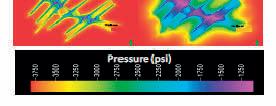



Figure 8. History-matching and forecasting shale gas production using three different modeling approaches. In (a), gridblock pressures on the left-hand side correspond to pressures at the end of the history-matching period, and gridblock pressures on the right-hand side correspond to pressures after 30 years. (b) illustrates the impact of model choice on cumulative production. Modified from Mack et al., (2010).
would require a very complete description of the existing natural fracture network, and other reservoir properties, necessitating detailed geological, petrophysical, and geophysical input (geology matters!).
Once the reservoir / hydraulic fracture characterization stage is complete, reservoir simulation of individual wells as well as field simulation may be attempted. The first objective is to calibrate the resulting simulation model against existing dynamic data (production and flowing and shut-in pressure information), then forecasting the wells against operational constraints in the future to create a “base” case. This often is an iterative procedure requiring various steps of the characterization procedure (Figure 1) to be revisited to reconcile model differences with actual well performance. We note that several reservoir simulation approaches may be used to represent the reservoir / hydraulic fracture system as discussed in Cipolla et al. (2010), including use of a (1) dual porosity / estimated stimulated volume (ESV) approach, the ESV being estimated using microseismic data; (2) modeling of the hydraulic fracture network using the Wire-mesh approach mentioned above; and (3) fracture plane extraction approach as described in Cipolla et al. (2010). Cipolla et al. (2010) compared each of these approaches and noted that despite the fact that each of them could be used to successfully history-match well data, the forecasts from each method were significantly different due to the differences in drainage volumes predicted by each approach (Figure 8). Clearly a model bias exists, and adds to the uncertainty in accurately predicting well production.
Once the “base case” that corresponds to the existing development scenario has been generated, additional development scenarios can be generated by performing sensitivities to well-spacing and orientation, fracture spacing, frac size, etc. with the fully calibrated simulator.
Figure 8. History-matching and forecasting shale gas production using three different modeling approaches. In (a), gridblock pressures on the left-hand side correspond to pressures at the end of the history-matching period, and gridblock pressures on the right-hand side correspond to pressures after
Figure 8. History-matching and forecasting shale gas production using three different modeling approaches. In (a), gridblock pressures on the left-hand side correspond to pressures at the end of the history-matching period, and gridblock pressures on the right-hand side correspond to pressures after
hydraulic fracture network is represented by an elliptical region with two sets of parallel vertical fractures that are uniformly spaced. The model can be used to predict the evolution in fracture geometry, treating pressure, fracture width, and proppant placement in the fracture network over time. The model can be constrained by using image logs, 3D seismic, core, and outcrop studies to estimate fracture network parameters. Further, microseismic data can be used to provide a constraint on overall fracture network dimensions.
We believe that the most rigorous approaches for modeling complex fracture geometries involve the use of coupled fluid flow and transport models, with geomechanical simulation. These approaches could allow for the prediction of microseismic events during the pumping of the frac job, which can be compared against the actual timelapse microseismic data, predict proppant distribution (and hence fracture conductivity), as well as the overall dimensions of the fracture network. Such approaches are in their infancy, but we look forward to significant advancements in this area. These approaches
Not a favorite topic of most geoscientists that we know, economic analysis of the forecasts generated from simulation is necessary to make informed decisions about optimal development planning. Each of the scenarios generated using reservoir simulation in the previous step require differing amounts of capital investment and may have different operating costs. The revenue generated from each development scenario is offset by costs associated with each scenario, and hence the optimal scenario is one that adds the most
value, while meeting regulatory requirements and considering the environment. As an example, we look at the relatively simple case of optimizing hydraulic fracture length for a single well scenario, assuming planar fracture geometry (Figure 9). A numerical simulator was used to generate forecasts for various combinations of hydraulic fracture half-length and stimulation costs evaluated by estimating the corresponding treatment volumes with a hydraulic fracture simulator – details are provided in Voneiff and Gatens (1993). Longer fracture half-lengths translate into greater production, but the increased revenue is offset by increased cost associated
with the hydraulic fracture treatment (more sand, etc.). An optimal hydraulic fracture size that maximizes value can be identified using this approach. A similar approach can be used to identify optimal number of fractures in multi-fractured horizontal wells (see Meyer et al., 2010), well-spacing, etc. A more sophisticated approach would be to perform the analysis using stochastic modeling – there are uncertainties in key reservoir and hydraulic fracture inputs for shale gas reservoirs, as well as model uncertainty, that will lead to a distribution of forecasts being generated for each scenario. The result would be a “performance surface” being generated as opposed to the simple curves illustrated










in Figure 9. Figure 9 assumed that there was no uncertainty in reservoir parameter inputs to the model used to generate the forecasts, which is unlikely in shale gas scenarios, or even many conventional reservoir scenarios.
Alas, field development must consider many more parameters than can be covered in this article. The reader is referred to an excellent summary (Reynolds and Munn, 2010) of field development considerations for the Horn River Basin, British Columbia, including pad design considerations, hydraulic fracture treatments, production and operations challenges, infrastructure issues, and development costs and economics.
Ambrose, R. J., Clarkson, C. R., Youngblood, J., Adams, R., Nguyen, Phuong, Nobakht, M., and Biseda, B. 2011. Life-cycle decline curve estimation for tight / shale gas reservoirs. Paper SPE 140519 presented at the Society of Petroleum Engineers Hydraulic Fracturing Technology Conference and Exhibition held in the Woodlands, Texas, 24-26 January.
American Petroleum Institute (API). 1998. Recommended practices for core analysis, RP 40, 2nd edition. API, Dallas, TX.



Middle Magdalena Basin: Model Unconventional Gas/Oil System 10 Wells
Km 2D Seismic Llanos Basin: Migration Pathways Detailed Use of Isotope tracers along with Noble gases derived from heavy metals
Putumayo Basin: Petroleum System with Emphasis on Expulsion & Migration 10 Wells 1500 – 2000 Km 2D Seismic















Anderson, D. M., Nobakht, M., Moghadam, S., and Mattar, L. 2010. Analysis of production data from fractured shale wells. Paper SPE 131787 presented at the Society of Petroleum Engineers Unconventional Gas Conference, Pittsburgh, Pennsylvania, 23-25 February.
Barree, R. D., Barree, V. L., and Craig, D. P. 2007. Holistic fracture diagnostics. Paper SPE 107877 Society of Petroleum Engineers Rocky Mountain Petroleum Technology Conference, Denver, Colorado, 16-18 April.
Bustin, R. M., Bustin, A. M. M., Cui, X., Ross, D. J. K., and Murthy Pathi, V. S., 2008a. Impact of shale properties on pore structure and storage characteristics, SPE paper 119892 presented at the Society of Petroleum Engineers Shale Gas Production Conference held in Fort Worth, Texas, 16-18 November.
Bustin, R. M., Bustin, A., Ross, D., Chalmers, G., Murthy, V., Laxmi, C., and Cui, X. 2008b. Shale gas opportunities and challenges. Search and Discovery Articles # 40382 (2009). Adapted from oral presentation at American Association of Petroleum Geologists Annual Convention, San Antonio, Texas, 20-23 April.
Byrnes, A. P. 2006. Rock properties of tight gas sandstones. Short course notes.
Cipolla, C. L., Williams, M. J., Weng, X., and Maxwell, S. 2010. Hydraulic fracture monitoring to reservoir simulation: maximizing value. Paper SPE 133877 presented at the Society of Petroleum Engineers Annual Technical Conference and Exhibition held in Florence, Italy, 19-22 September.
transverse hydraulic fractures in horizontal wells. Paper SPE 131732 presented at the Society of Petroleum Engineers Unconventional Gas Conference, Pittsburgh, Pennsylvania, 23-25 February.
Reynolds, M. M., and Munn, D. L. 2010. Development update for an emerging shale gas giant field – Horn River Basin, British Columbia, Canada. Paper SPE 130103 presented at the Society of Petroleum Engineers Unconventional Gas Conference, Pittsburgh, Pennsylvania, 23-25 February.
Sondergeld, C. H., Newsham, K. E., Comisky, J. T., Rice, M. C. and Rai, C. S. 2010. Petrophysical considerations in evaluating and producing shale gas resources. Paper SPE 131768 presented at the Society of Petroleum Engineers Unconventional Gas Conference, Pittsburgh, Pennsylvania, 23-25 February.
Voneiff, G. W. and Gatens, J. M., III. 1993. The benefits of applying technology to Devonian shale wells. Paper SPE 26890 presented at the 1993 Society of Petroleum Engineers Eastern Regional Conference and Exhibition, Pittsburgh, Pennsylvania, 2-4 November.
9. Using simulation and economics to optimize hydraulic fracture length. Example from and Gatens (1993).
Cui, X., Bustin, A. M. M., and Bustin, R. M. 2009. Measurements of gas permeability and diffusivity of tight reservoir rocks. Geofluids v. 9, p. 208-223.
Mack, M., Cipolla, C. L., and Maxwell, S. 2010. Geomechanical explanations for microseismic images in shale plays. Poster presentation at the American Association of Petroleum Geologists / Society
Reservoir Property
of Exploration Geophysicists / Society of Petroleum Engineers / Society of Petrophysicists and Well Log Analysts Hedberg Research Conference – Critical Assessment of Shale Resource Plays, Austin, TX, 5-10 December.
Meyer, B. R., Bazan, L. W., Jacot, R. H., and Lattibeaudiere, M. G. 2010. Optimization of multiple
Data Source
Xu, W., Thiercelin, M., Ganguly, U., Weng, X., Gu, H., Onda, H., Sun, J., and Le Calvez, J. 2010. Wiremesh: A novel shale fracture simulator. Paper SPE 132218 presented at the CPS / Society of Petroleum Engineers International Oil & Gas Conference and Exhibition in China held in Beijing, China, 8-10 June.



When you get past the surface, you will recognize the in-depth, actionable information used to advance energy-critical business decisions. More than five decades of gathering, analyzing and refining information gives us the ability to see past what’s publicly available, and deliver exactly what you need. Energy information, refined.
www.ihs.com/refined-information/cspg




Focus, quality and value. We don’t build our reputation on volumes—instead, we earn it on the quality of the information we extract from that data. For more than 50 years, IHS has processed and analyzed vast amounts of raw data, concentrating it into the in-depth, actionable information that is used today to advance energy-critical business decisions. Energy information, refined.
www.ihs.com/refined-information/cspg

Monday, May 9, 2011
6:00pm – 7:30pm
Hyatt Regency Calgary
Imperial Ballroom
The Canadian Society of Petroleum Geologists annually presents a variety of awards to recognize technical achievements and excellence in volunteerism. The 2010 CSPG awards will be presented at the 2011 Awards Ceremony on Monday, May 9, 2011. The event will be held in the Imperial Ballroom of the Hyatt Regency Calgary from 6:00pm to 7:30pm and although it is held in conjunction with the recovery 2011 Convention, it is open to the public.
Please join us to honour the volunteer contributions and technical excellence of your fellow CSPG members.
Presentations of the following awards will be made:
TECHNICAL AWARDS
Stanley Slipper Gold Medal
Dr. Norman Fischbuch
R.J.W. Douglas Medal
Dr. Deborah Spratt

Honourary Membership
*to be presented at the 2011 Long-Time Members Reception*
Dr. Michael Cecile, Dr. George Pemberton
Link Award
Dr. Jen Russel-Houston
Medal of Merit
Dr. Jack Wendte, David Sargent, Alan Byrnes, and Dr. Ihsan Al-Aasm
VOLUNTEER AWARDS
President’s Award
Dr. Mark Cooper, Colin Yeo

The CSPG Link Award is given for the best presentation at a CSPG Technical Luncheon session. The presentation must be of either a geological or a related technical subject, and must be presented in Calgary by a CSPG member. This year’s award is monumental in the fact that for the first time in the history of the CSPG, the Link Award will be presented to a woman.
The recipient of the 2010 Link Award is Dr. Jen Russel-Houston. The Link Award Committee deemed her March 23, 2010 talk
(co-presented by Alan Abrams of Osum Oil Sands Corp.) to be the best of an excellent group of talks in 2010. The presentation, “How an Underground Approach to Commercial Bitumen Development of the Grosmont Formation Could Maximize Profitability and Minimize Environmental Footprint” can be viewed through the CSPG Technical Luncheon Webcast Archives at http://www.cspg.org/ events/webcasts/2010-webcasts.cfm.
Dr. Jen Russel-Houston has extensive experience in petroleum geology as a subsurface team leader, geologist, and researcher. She is currently the Geoscience Manager at Osum Oil Sands Corp., where she leads the team in geological and geophysical investigations related to exploration and development of the Cold Lake Taiga Project and the Wabasca area bitumen-saturated carbonates.
Jen has also made significant contributions to other unconventional and heavy oil projects including Shell’s Peace River in situ oil sands project, where she led a team of geoscientists and engineers in the delineation, appraisal and development of the Bluesky Formation. Prior to this, she was a geologist with Shell’s Sable Offshore Development where she created 3D static models that integrated seismic,
Partnership Tracks Award
John Cuthbertson, Annette Milbradt
Service and Volunteer Awards
For a listing of recipients please see the following webpages:
http://www.cspg.org/awards/volunteer/service-award.cfm http://www.cspg.org/awards/volunteer/volunteer-awards.cfm
We will also be recognizing our Technical Luncheon and Technical Division speakers, Short Course and Field Seminar instructors and leaders, and Honourary Address speakers at this event.
petrophysical logs, and core data in realistic geologic models. Jen joined Shell in 2001 after completing her Ph.D. studies at Dalhousie University, which focused on graptolite paleontology and carbonate sedimentology of a Silurian-aged carbonate ramp of the Cape Philips Formation in the Arctic of Canada. Jen is actively presenting and publishing research with colleagues at Osum. Her team’s research involves the integration of mineralogy, sedimentology, ichnology, stratigraphy, petrophysics, geophysics, geomechanics, and geochemistry into a complete characterization of both clastic and carbonate reservoirs. This research is applied to successfully plan and optimize thermal bitumen developments. In 2010 she was a lecturer with the CSPG University Outreach Program and is an Associate Editor of the Bulletin of Canadian Petroleum Geology. Jen is most content exploring the mountains with her husband and her two boys, who love fossil-hunting as much as she does.
The 2010 Link Award will be presented at the 2011 CSPG Awards Ceremony on Monday, May 9th at the Hyatt Regency Calgary.
The full Link Award citation appears in the March 2011 issue of the CSPG Bulletin of Canadian Petroleum Geology.
CSPG Honourary Memberships are awarded for distinguished service to the Canadian Society of Petroleum Geologists. This year, two worthy recipients will be presented with their awards at the 11th Annual CSPG LongTime Members Reception on Tuesday, May 10, 2011.

Dr. Michael Cecile
Mike Cecile is a versatile geologist and administrator who has served CSPG over the past 35 years. He has made numerous contributions to the geology of Canada and the promotion of petroleum geology, and he always does so with enthusiasm and great ideas.
Mike has been a member of CSPG since 1976. He commenced his CSPG volunteerism one year later with the Graduate Thesis Award Committee, which was followed by a Chair position on the Logan Day Committee for seven years (1978 marked the year that CSPG began a tradition of celebrating Logan Day as Canada’s National Geology Day in the fall of each year). Later he became a director on the Executive Committee and moved up through the ranks as vice President, President, and Past President. As Past President, Cecile represented CSPG on the Canadian Geoscience Council and on the Alberta Geological Survey Committee for two years. Mike was the CSPG General Co-Chair for the 2009 “Frontiers and Innovations” Joint Annual Convention. His longstanding and continued role as a volunteer for the CSPG has been rewarding due to the many great friends and professional colleagues he has met and worked with over the years.

Dr. S. George Pemberton
George Pemberton has made outstanding contributions to the national and international scientific and petroleum geology community through his research in animal-sediment relationships, application of trace fossils and invertebrate paleontology, siliciclastic and carbonate sedimentology, stratigraphy, and petroleum geology. CSPG also recognizes his mentoring mastery to a generation of earth scientists and students throughout his teaching career.
George’s contributions to the scientific and petroleum geology community include over 200 papers (authored or co-authored), 7 books (edited or co-edited) and approximately 300 presentations at national or international meetings. George has written 98 reports for petroleum geology companies around the world, has served as Associate Editor of the Bulletin of Canadian of Petroleum Geology, and has co-authored numerous scientific publications, including CSPG Memoirs and Core Conference Volumes. He is editor and co-founder of “Ichnos,” an international

journal in organism-substrate relationships and has conducted over 100 industry short courses, many for the CSPG.
George has received numerous awards from CSPG, AAPG, SEPM, GAC and the University of Georgia.
The full Honourary Membership citations appear in the March 2011 issue of the CSPG Bulletin of Canadian Petroleum Geology.







With reservoirs becoming increasingly complex, you need the most accurate information you can get to better understand your reservoir.
Weatherford Labs helps you get more from your core by combining an unsurpassed global team of geoscientists, engineers, technicians and researchers with the industry’s most comprehensive, integrated laboratory services worldwide. From core analysis, sorption, geochemistry and isotopic composition to detailed basin modeling and comprehensive data packages, we provide you with real reservoir rock and fluid information that hasn’t been distilled by a simulator or iterated by software.
We call it “The Ground Truth™” – giving you the accurate answers you need for better reservoir understanding. You’ll call it a better return on your reservoir investment. To learn more, contact TheGroundTruth@weatherfordlabs.com.
weatherfordlabs.com
| By Gerry Reinson and Clint Tippett

The Stanley Slipper Gold Medal is the Canadian Society of Petroleum Geologists’ most prestigious award. This award was established in 1989 to honour individuals who have made outstanding contributions to the science of petroleum geology and to petroleum exploration in Canada. The award is named after Stanley E. Slipper, the first President of the Alberta Society of Petroleum Geologists (later C.S.P.G.), a pioneer and icon of early exploration efforts in Alberta.
The recipient of the 2010 Stanley Slipper Gold Medal is Norman Fischbuch. Norm was born in 1931 in the small village of Empress, Alberta, near the Saskatchewan border. He attended school first in Oyen and then in Red Deer, where he graduated from high school in 1950. Norm’s interest in the petroleum industry was piqued when he found himself digging ditches by hand in Oyen, all the while observing “jug hustlers” on a seismic crew making more money and working much less strenuously. So he joined the seismic crew and hustled jugs. Soon after, he enrolled at the University of Alberta and graduated with a B.Sc. in Geology in 1955.
After one year of graduate school and needing the money, Norm began work as a wellsite geologist for Phillips Petroleum. Norm “sat” wells in Pembina, northeastern British Columbia, and Kaybob, amongst other locales, from 1956 to 1960.
During his well-sitting tenure, Norm was instrumental in bringing in the Swan Hills discovery well in the Kaybob Field at Phillips Kaybob A-7-22-64-19W5 in June 1957 and in the following manner. At the time the Swan Hills Formation had not yet been identified. The well was targeted for the younger Devonian Leduc reef interval but, at that level, it encountered only non-prospective
Ireton shale. Norm was then told to get the well to the deeper Granite Wash level before break-up, so that the acreage could be earned according to the farmout agreement. However, upon observing significant porosity in the deeper section, and against all urging to continue drilling, Norm ‘cut’ a core. The result – the discovery of fifty feet of stromatoporoid oil pay that, when completed, flowed 1,560 barrels per day on a ½ inch choke. The well in question has produced over 5 million barrels to date and the Kaybob Beaverhill Lake “A” Pool is recognized to have originally contained 125 million barrels of reserves. Drilling was resumed at the wellsite after coring and the well reached total depth in the Cambrian, thus fulfilling the contract obligation and earning provisions. Needless to say, Norm continued to “sit” on the subsequent Kaybob field wells.
Norm continued his Master’s degree studies at the University of Alberta while he was working and used the core samples from Kaybob to complete his thesis, entitled “Stromatoporoids of the Kaybob Reef”, in 1959. Norm has mentioned many times his reverence for his supervisor Professor Charlie Stelck, who greatly influenced his love for geology in general and palaeontology in particular.
From 1960 to 1965, Norm was employed as Regional Geologist for Pure Oil Company in Calgary. During this period he worked primarily on the Slave Point Formation (‘Swan Hills’ equivalent) recommending well locations at Kotcho, Petitot, and Clarke Lake. Norm also undertook field work in the northern McKenzie Mountains and the Yukon (Eagle Plain region) while at Pure Oil Company.
By 1965, Norm had become extremely knowledgeable in Middle Devonian carbonate reef stratigraphy, especially the stromatoporoid biofacies of the Swan Hills Formation. He would become an expert (“Mr. Swan Hills” it could be said) when, in 1968, he obtained his Ph.D. from the University of Saskatchewan. His thesis, “Stratigraphy of the Devonian Swan Hills Reef Complexes of Central Alberta”, became a classic work. It set the standard for all the stratigraphy and facies analysis studies that followed, both by graduate students and academic researchers alike. Norm received the CSPG’s “Medal of Merit” award for his 114 page ‘tome’ on Swan Hills reef complexes, published in the 1968 CSPG Bulletin.

After a brief tenure with Atlantic Richfield Company in 1968-1969, Norm founded Fischbuch Consultants Ltd. and, over a period of twelve years, undertook regional studies on carbonate stratigraphy and subsurface geology throughout Western Canada, the Northwest Territories, Arctic Islands, and northern United States.
In 1980, Norm founded Gane Petroleum with himself as President and Chief Executive Officer. Gane, and its successor Northstar, became a highly successful publically-traded oil and gas exploration company. However, in 1983 Norm’s abiding interest and love for applied research and subsurface stratigraphy led him back to private consulting. He resumed regional geological and basin analysis studies with emphasis on carbonate strata. As well as his old stomping grounds of Canada and the United States, Norm undertook reefal mapping and project assignments in Western Australia, Central and South America, Russia, and China.
Norm continued these activities until 2008, when he again founded a private oil and gas exploration company, Keekwilee Developments Ltd., and participated in Devonian oil and gas ventures on a nonoperating basis. It is noteworthy that as late as 2008 in his long and illustrious career, Norm’s work was instrumental in discoveries of a Nisku pool at Virginia Hills, pool extensions to Carson Creek, and new Swan Hills oil pools at Sakwatamau.
Norm Fischbuch continues to be active in documenting and researching Devonian carbonates, and exploring for new petroleum reserves. He truly has had a tremendous influence in shaping our understanding of Devonian strata in Western Canada, both on the research side and with respect to practical exploration strategies. His numerous publications and unpublished studies, his direct and indirect influence on the discovery of several Devonian fields, and his foray into the formation of a large Canadian petroleum exploration company (Northstar), attest to his worthiness to receive the honour of the Stanley Slipper Gold Medal.
The 2010 Stanley Slipper Gold Medal will be presented at the CSPG Awards Ceremony on Monday, May 9th at the Hyatt Regency Calgary Imperial Ballroom starting at 6:00pm. The event is open to the public.
| By Kirk Osadetz, President, on behalf of the Executive Committee
A key role of the CSPG Executive Committee is to ensure the continuity and alignment of Society business and governance. The efforts of several Executives preceding this one worked effectively to insure the efficient operation of the Society and to provide us with a blue-print for future renewal. It is now time to ensure that we provide future executives, programs, and activities with the tools to grow and strengthen the Society. In addition, it is better to act proactively and regularly than to wait for a problem or crisis to precipitate an action, since regular review can be both comprehensive and detailed, as opposed to being problem-specific. Our by-laws are our key governance instrument. you can find a copy of the current by-laws on the CSPG website at the address: http:// www.cspg.org/about/governance-bylaws. cfm. They were last revised in 2003. A combination of: comments from members –including past-presidents, current practise and environment, and an initial review by Society Executives indicates a need to amend certain articles. The intention of the amendments is to ensure current alignment and provide for future growth and success.
The governance and future of the Society should be an interest and responsibility of all its voting members. During April, in addition to this article, you will receive notification of a web-based survey soliciting your evaluation and assessment of the current by-laws, as well as seeking your advice regarding alternative formulations of potential amendments. Survey results will be made available for your information. In consideration of the survey results, the Executive Committee will draft appropriate amendments with legal advice. Once the draft amendments are endorsed by the Executive Committee, they will be communicated to the membership. Our current by-laws required a vote by all the members, which will employ another webbased method, such as that used for last year’s election. If approved, amendments will not come into effect until they are officially registered. It is unlikely that registration can be accomplished during the current calendar year, so no changes will come into effect during 2011.
your participation in the evaluation of
current by-laws, the indication of preferences for potential amendments, your consideration of the proposed amendments and, finally, your vote to accept or reject proposed changes is essential for the good governance and future opportunities of the Society. you can also communicate with the Executive
by providing comments directly to the President by writing to kosadetz@nrcan. gc.ca, and putting the word By-laws in the subject line of your letter or e-mail. The Executive thanks you, in advance, for your attention and participation in this important process.







| By Philip Benham and Yingchun Guan


Trailhead: Location is North of Cochrane. Proceed north on Hwy 766, turn West on Hwy 567. A sign points south to Big Hill Springs Provincial Park along Range Road 34A. From the turn it is about 2 km to the parking area. Proceed to trail head at picnic benches across from parking area.
Distance: 2.3km return on a maintained but unpaved loop trail, and a lazy one- or two-hour stroll including any side trips or stop for a picnic.
Elevation Gain: ~20 m.
Big Hills Springs Provincial Park is a popular dog walking, birding, and picnic area not far north of Cochrane. It is suitable as a Spring hike provided the snow cover has mostly melted. It features an active spring and associated tufa deposits. The deposits are limited and fragile, please do not harm them in your explorations.



About 11,400 years ago, Big Hill Creek was a raging river, pouring glacial melt water south into glacial Lake Calgary (Fisher, 1999). The temporary lake formed as the water flowing from the retreating Cordilleran Ice Sheet found the watershed blocked by the Laurentide Ice sheet to the east. Today, Big Hill Creek is a gentle stream winding its way to Cochrane. The misfit stream’s valley walls are defined in white in the accompanying map. The Big Hill Springs issue from a gravel-choked tributary along which the trail (marked in blue) follows. Groundwater flowing through the Palaeocene Paskapoo Formation and then glacial gravel retain carbonates in solution. The springs flow year round, and, as they surface, begin to deposit layers of carbonate known as tufa. A similar process occurs drip by drip in limestone caves to create stalactites.
The tufa forms terraces and rind-like coatings on rocks, branches, mosses, and algae growing in the mild springs. When the organic material rots away casts of these features can be found. Several tufa terraces are encountered in the hike. Note that some of them exist where the stream no longer flows, attesting to the variability of the spring over time. The largest of the tufa terraces curves across the small valley and contains a large number of log casts. Some have speculated it is a fossilized beaver dam but perhaps processes at work today provide an alternate explanation. Branches and other debris gathers at several points along the spring, creating a natural barrier and possible focus for tufa formation. The park is also the location of an old fish hatchery and Alberta’s first creamery.
References:
Fisher, T. G. 1999. Canadian Journal of Earth Sciences, v. 36, no. 5, p. 791-803.
Turner, E. C. and Jones, B. 2005. Sedimentology. v. 52, no. 5, p. 1043-1066.
The Reservoir welcomes contributions from our readership to this series. If you wish to offer a submission to Go Take a Hike on your favourite hike of geological interest, email the Reservoir (caitlin.young@cspg.org) for more information.



Centre Left: Dendritic growth patterns (noted by arrows) are related to tufa formation on mosses. Growth of tufa may be aided directly or indirectly by microbes that coat mosses, cyanobacteria, (blue green algae) and other organic material (Turner and Jones, 2005). Camera lens for scale.

Top Left: View from top of a tufa deposit to a log jam in a stream. A future tufa terrace?
Top Right: Inactive tufa deposit being eroded by stream. The Paskapoo-lined valley walls of misfit Big HIlls Creek are in background. Centre right: Detail of strange shapes in tufa, resulting from carbonate coating and replacing vegetation.
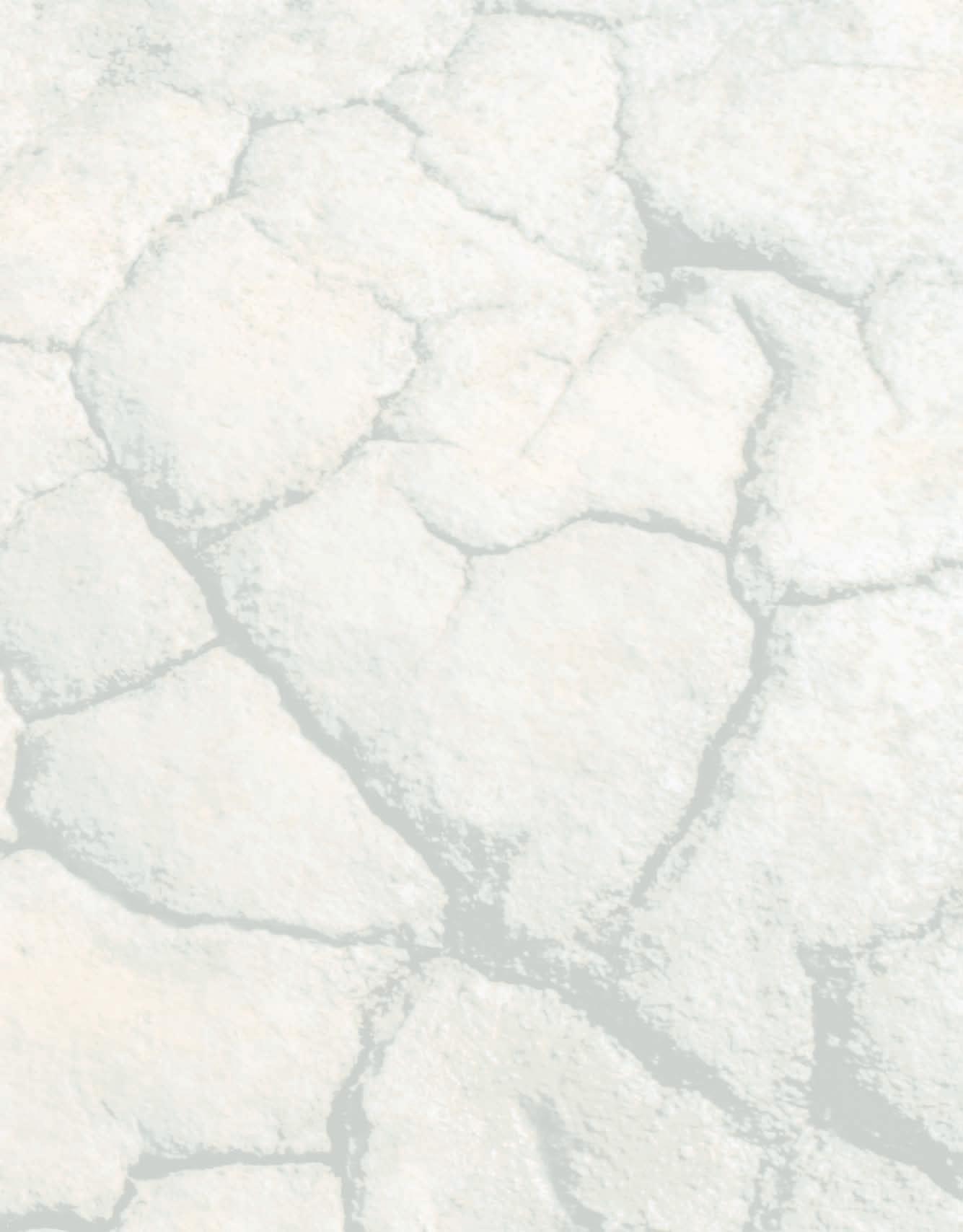
This large, curving tufaterrace has been speculated to have formed around a beaver dam. It contains numerous log and branch casts.


Shale Gas Critical Fundamentals
Instructor: Basim Faraj
Date: May 2
Price: $750.00 CDN
The Architecture of Fluvial Reservoirs
Instructor: Andrew Miall
Date: May 2 - 3
Price: $850.00 CDN
Non-Seismic Detection of Hydrocarbons
Instructor: Dietmar Schumacher
Date: May 2
Price: $350.00 CDN
Basic Petroleum Economics
Instructors: Andrew Botterill and Debbie Horbachewski
Dates: May 3 - 4
Price: $1,250.00 CDN
Deepwater Petroleum Systems
Instructor: Grant Wach
Date: May 3 – 4
Price: $1,115.00 CDN
SAGD - Applications to Oil Sands Recovery
Instructors: Rudy Strobl, Milovan Fustic, and Daryl Wightman
Date: May 3
Price: $850.00 CDN
Value of Core Measurements in Heavy Oil Reservoirs
Instructor: Safdar Khan and David Handwerger
Date: May 3
Price: $650.00 CDN
Subsurface Methods – Core Work and Log Correlation in Clastic Sediments
Instructor: Doug Cant
Dates: May 4
Price: $775.00 CDN
Understanding Basinal Controls of Sequence Generation
Instructor: Andrew Miall
Date: May 4 - 5
Price: $850.00 CDN
Clastic Facies and Depositional Environments in Core
Instructor: Bill Arnott
Date: May 4 - 6
Price: $1,400.00 CDN
Seismic Exploration for Non-Geophysicists
Instructor: Bill Nickerson
Date: May 4 - 6
Price: $1,625.00 CDN
Geostatistics for Modeling Geological Heterogeneity and Uncertainty
Instructor: Clayton V. Deutsch
Dates: May 5 - 6
Price: $1,020.00 CDN
Practical Sequence Stratigraphy
Instructor: Ashton Embry
Dates: May 5 - 6
Price: $730.00 CDN
Rock Creek Stratigraphy, Sedimentology, and Petroleum Geology
Instructor: Doug Cant
Dates: May 6
Price: $815.00 CDN
Writing for Earth Scientists
Instructor: Matt Hall
Date: May 6
Price: $520.00 CDN
Sequence Stratigraphy for Students
Instructor: Vitor Abreu and Bob Stewart
Date: May 7 - 8
Price: $20.00 CDN
Log Analysis of Unconventional Reservoirs
Instructor: Ross Crain
Date: May 16
Price: $695.00 CDN
Mannville Stratigraphy, Sedimentology, and Petroleum Geology
Instructor: Doug Cant
Date: May 16 - 18
Price: $1,680.00 CDN
Petroleum Economics Spread Sheet Building Instructor: Dave Volek
Date: May 16
Price: $500.00 CDN
Sequence Stratigraphy: Principals and Applications
Instructor: Octavian Catuneanu
Date: May 16 - 18
Price: $1,150.00 CDN
Integrated Core Analysis for Unconventional Reservoirs
Instructor: Safdar Khan and Tim Sodergren
Date: May 16
Price: $650.00 CDN
The Power of Trust in the Workplace
Instructor: Bruce Lee
Date: Morning of May 17
Price: $180.00 CDN
Working Across the Generation
Instructor: Bruce Lee
Date: Afternoon of May 17
Price: $180.00 CDN
Petroleum Exploration in Fold and Thrust Belts – and Beyond
Instructor: Peter Jones
Date: May 17 -19
Price: $1,085.00 CDN
Conflict Resolution within the Realm of Oil and Gas Negotiations
Instructor: David Hill
Date: May 17 - 18
Price: $850.00 CDN
Reservoir Geology of Sandstones
Instructor: Godfried Wasser
Date: May 17 - 20
Price: $1,600.00 CDN
Time Management – How to Get Control of Your Day, Life and Career
Instructor: Bruce Lee
Date: May 18
Price: $345.00 CDN
Drilling and Production Fundamentals
Instructor: David Hill
Date: May 19 - 20
Price: $850.00 CDN
Core Workshop - Methodology for Logging Clastic and Carbonate Cores
Instructor: Eva Divet and Lisa Griffiths
Date: May 19
Price: $750.00 CDN
Reservoir Geomechanics in Thermal Operations
Instructor: Safdar Khan
Date: May 19 - 20
Price: $1,150.00 CDN
The Stratigraphic Setting of Lower and Middle Triassic Strata
Instructor: Jim Dixon
Date: Morning of May 20
Price: $375.00 CDN
Petroleum Geomechanics for Developing Unconventional Resources
Instructor: Pat McLellan and Chris Hawkes
Date: May 25 - 26
Price: $1,400.00 CDN
Sequence Stratigraphy, Sedimentology, and Reservoir Facies of the Montney Formation
Instructors: John Paul Zonneveld and Tom Moslow
Dates: May 4 - 6
Price: $1,975.00 CDN
Geological Walking Tour – The Building Rocks of Calgary
Instructor: Bill Ayrton
Dates: Afternoon of May 5
Price: $200.00 CDN
SAGD - Application of Outcrop Analogues, Geology, Geophysics, and Geochemistry to Oil Sands Recovery
Instructors: Rudy Strobl, Milovan Fustic and Daryl Wightman
Dates: May 5 - 6
Price: $2,755.00 CDN
| By David Caldwell
Contrasting the Reservoirs of Braided vs. Meandering Depositional Systems
Instructor: Jon Noad
Dates: May 6 - 7
Price: $625.00 CDN
The Rise and Fall of Turtle Mountain, Crowsnest Pass, Alberta
Instructors: Willem Langenberg and Tim Hartel
Dates: May 13 - 14 (departure following the Core Meltdown)
Price: $475.00 CDN
The Triassic of Northeastern British Columbia: Sedimentary Characteristics & Stratigraphic Architecture of Convention and Unconventional Reservoir Successions
Instructor: John Paul Zonneveld
Dates: May 16 - 19
Price: $3,000.00 CDN
Structure and Hydrocarbon Occurrence, Rocky Mountain Foothills and Front Ranges
Instructors: Kirk Osadetz, Glen Stockmal, and David Kisilevsky
Dates: May 18 - 20
Price: $1,500.00 CDN
Drilling and Production; a Trip to a Working Drilling Rig and Production Facilities
Instructor: David Hill
Dates: May 27
Price: $600.00 CDN
For more information on these and other field seminars please visit www.cspg.org/education/education.cfm ,
The 28th Annual squash tournament will be remembered for many great moments but perhaps the most memorable event was during the Banquet Ceremonies. Long-time squash players Dell Pohlman and Bruce Shultz were asked to present the newly re-named Cindy Reidiger Spirit Award in honor of their past colleague, who had been taken away from us suddenly last summer. Cindy, a geologist, teacher, and friend to many people at the squash tournament, tragically lost her life trying to rescue someone in distress. The award which symbolizes spirit, and making memorable contributions to the squash tournament –something Cindy did for years as a player and continued to do in her own life. The transition of the trophy was a surprise to many at the tournament and an even bigger surprise to Dell and Bruce who were named the first winners of the newly-named Cindy Reidiger Spirit Award. These guys have both been involved with the tourney since its inception 28 years ago. Bruce missed one year of play for hip surgery, but has been in it every other year, as has Dell. It was a great award for two great contributors and fitting that the two winners were the ones who created the award three years ago and who were long-time friends and colleagues of the late Cindy Reidiger.
The tournament featured great squash matches in singles and doubles. The Women’s A division in singles saw two new finalists with Kristy Howe coming out on top, beating Heather Shepley. Men’s Competitive Doubles also had a new winner with Brian Fyke and Brian Rutherford narrowly edging out Norm Wegerhoff and Richard Burrage. Costumes were also very creative this year. The Neon teams of Naomi Storey and Dan Wright, along with Aaron Grimeau and Kristina Vasic took home the prize.
The food served by the World Health Club in Edgemont was unbelievable. Pasta night was followed by Wrap Night and then Saturday Brunch. Banquet dinner didn’t disappoint either, with some great lasagna and entertainment. This is undoubtedly a great venue for an event like this. The staff at the World Health club were truly amazing.
Thanks again goes out to Tucker Wireline, who lead the way with their Tournament Sponsorship.
Geotir and Sensor Geophysical also stepped in at the Platinum level to provide needed funds for the Taxi Chits, Teams Tourney, and Registration Night. Other large sponsors were: Belloy Petroleum Consulting, Cougar Consultants Inc., Divestco, Earth Signal Processing, GRS Rentals & Services Inc., Halliburton, Pason, Prospex Resource Management, Pulse Seismic, RPS Energy, Rigsat Gas Detection Communications, Source x Geophysical, and Total Gas Detection.
A huge thanks to our great committee for helping put this all together: Jeff Barefoot, Ryan Barnett, David Caldwell, Jocelyn Frankow, Kristy Howe, Shawn Lafleur, Jessie Mitton, Randy Smith, Naomi Storey, Val Toploniski, and Jay Williams.
Thanks to the CSPG Office for their help with registration and sponsorship.
We are looking forward to another great event in 2012. Mark your calendars as the tournament almost always takes place in the first week of February.

You will be tasked with the responsibility of working with the Silent Auction Committee to secure donations for the 2011 Honorary Address Silent Auction. This position requires a time commitment from 1 to 2 hours per week from now until November 2, 2011 (2 positions available).
You will work with the marketing committee to promote the 2011 Honorary Address to the general public and the industry. This position requires a 2 – 3 hour per week time commitment from now until November 2, 2011, with the majority of the work in September and October (2 positions available).

Neuralog introduces the NeuraJet17, April 2011. This solution is designed to efficiently print brilliant logs. The top of form feature and the stacker mean little to no supervision is required. See why the NeuraJet17 is the ideal log printing solution.
This role will require you to assist in securing sponsorship dollars for the 2011 CSPG Honorary Address. This position requires a time commitment of 1 – 2 hours per week from now until November 2, 2011, with the majority of the work taking place in May and June (1 position available).
(2 to 4 volunteers needed)
2011 will be a joint-venture Core Conference.
Functions:
1. To solicit core from around the world, arrange for shipping, engage a representative to discuss the core on the day the core is displayed, and thank corporations for releasing core.
2. To create the program and schedule the core sessions.
3. Marketing for attendance – circular, networking, ads, etc.
4. Sponsors – may depend on jointventure partner
Various positions ranging from a few hours to a few days during the recovery 2011 convention May 9-13. Please contact Convention Manager Aileen Lozie, aileen.lozie@cspg.org.
Position requires a CSPG member who is a long-time member (30+ years) and is familiar with other long-time CSPG Members.
If you are interested in any of the above positions please contact Kasandra Klein, Member Services Coordinator, kasandra.klein@cspg.org or 403-513-1229

Seismic Interpretation in Fold and Thrust Belts Using Fault-Related Folding Techniques August 15-18
Massachusetts Modern Terrigenous Clastic Depositional Systems September 6-13 South
Sedimentology and Sequence Stratigraphic Response of Paralic Deposits September 22-29 to Changes in Accommodation: Predicting Reservoir Architecture Utah
Fundamentals of Wrench Tectonics Applied to the Anatolian Plate September 26-Oct. 1 Nevada Summer Education Conference June 6 -10 Ft. Worth, TX
and Controls on Porosity May 15-20 Spain
| By Caitlin Young
Legendary professor and geologist Charles Stelck has made a significant donation to Calgary’s own Mount Royal University in the form of his collection of historical artefacts, some of which precede the first oil discovery in Alberta.
Many CSPG members will recognize the name Charles Stelck as the father of Alberta’s oil industry, and some may even have had the good fortune of studying under the professor at the University of Alberta. During the early 1940’s Stelck’s research led to the idea and eventual discovery that coral reefs had once existed in what is now the Northwest Territories. Stelck himself, and through the hundreds of students he has taught, is responsible for significantly increasing Canadian and Australian oil reserves, including the discovery of oil in Devon (Leduc No. 1) and the Pembina oil field.
During his years as a professor at the University of Alberta, Stelck wrote more than 100 publications and was also a part of the Alberta Research Council representing the geological sector. In 1997, Stelck was appointed Officer of the Order of Canada and in 2005 he was inducted into the Canadian Petroleum Hall of Fame. A passionate
educator, Stelck received several teaching excellence awards in addition to the Grover E. Murray Memorial Distinguished Educator Award from the American Association of Petroleum Geologists in 2001, and an Honorary Doctor of Science from the University of Alberta in 2003. He is a long-time member of the CSPG, joining in 1944 and was awarded the prestigious R.J.W Douglas Medal in 1994. The medal is awarded annually for outstanding scientific contributions of sedimentary geology in Canada.
Stelck says that “As professors, the success of your students justifies your teaching” and that the most important factor for a university is “the graduates that you turn out.” It is this passion and dedication to educating students that led to the donation of Stelck’s collection to Mount Royal University Library. The collection includes a significant portion of Stelck’s personal reference library, classic works on the understanding of rocks and fossils in Alberta, some dating back to the late 1800s and very rare observations by Stelck about his own discoveries and research. Stelck believes that an education should directly prepare students for their future after university, and this generous donation will have a profound
effect on the practical experience of current and future geology students at Alberta’s oldest new University.
“This is a connection with pretty deep roots in the history of stratigraphy in Alberta,” says Associate Professor of Earth Sciences at Mount Royal, Paul Johnston. “We are very fortunate to have this collection at Mount Royal. Students will be given the chance to access primary literature and fundamental publications that geologists routinely use. These are classic works in geology and paleontology in Western Canada.” A past student of Stelck, Johnston says “Dr. Stelck often drew upon his own experiences and research while teaching in the classroom so you always felt as if you were on the front lines of exploration in geology in Alberta.”
CSPG congratulates Mount Royal University on being the recipients of this extremely valuable collection. We also commend Charles Stelck for making this incredible and generous donation to further the education of Mount Royal students in the area of geology. Thank you Charles Stelck, for being a Geologist Giving Back.
CSPG is collecting photos of geological interest from across Canada and around the world to include on a promotional DVD, the end goal of which is to promote general society awareness on an international level and Corporate Membership/Sponsorship of the CSPG. The rst edition of the DVD is entitled Rocks! Across Canada and features the vast breadth of the Canadian geological landscape. This is just the rst edition in a series of DVD's that the CSPG plans to produce, with later editions featuring geological landscapes from around the world.

So, if you have photographs of geological interest from either Canadian or International locations and would like to submit them for use in the DVD series, or if you are unsure if your photo may not be what we are looking for or if you have any questions regarding this new project, please email Publications Coordinator Caitlin Young at caitlin.young@cspg.org or call 403-513-1227
Tuesday, May 10, 2011
4:30 pm – 6:30 pm
Hyatt Regency Calgary
Imperial Ballroom
Have you been a member of the CSPG for 30+ years (since at least 1981)?
If so, keep an eye open for your invitation to the 11th Annual Long-Time Members Reception. The popular event is a complimentary cocktail party organized exclusively for our more senior members, in appreciation of their long commitment to the Society. Attendance is by invitation only.
NEW! This year the reception will be held at the Hyatt Regency Calgary on Tuesday, May 10, 2011 from 4:30 to 6:30pm. It will be held at this new location in conjunction with the recovery 2011 Convention, but you need not be registered for the Convention in order to attend the event.
As is tradition, we will be presenting the Honourary Membership Awards at the

Long-Time Members Reception. This year’s recipients are Mike Cecile and George Pemberton.
If you are a long-time member and have not received your invitation by April 25, please call Kasandra Klein, Member Services Coordinator at 403-513-1229.


APACHE C ANADA LTD.
BAKER ATLAS
C ANADIAN NATURAL RESOURCES LTD
C ASE y & ASSOCIATES
CONOCOPHILLIPS C ANADA LIMITED
DEVON C ANADA CORPORATION
E NERPLUS CORPORATION
GEOLOGIC SySTEMS LTD
H UNT OIL COMPANy OF C ANADA
HUSKy ENERGy INC.
IHS
IMPERIAL OIL RESOURCES
MJ SySTEMS
MURPHy OIL COMPANy
NExEN INC
PENN WEST PETROLEUM LTD
PETROCRAFT PRODUCTS LTD
PLUSPETROL S.A
RPS E NERGy C ANADA LTD
S HELL C ANADA LIMITED
S PROULE ASSOCIATES LIMITED
SUNCOR E NERGy INC
TALISMAN ENERGy INC .
TOTAL E&P CANADA LTD.
TOURMALINE OIL CORP
AS OF APRIL 10, 2011
CSPG welcomes our 2011 Corporate Members! The benefits of being a corporate member include:
• Recognition in the monthly Reservoir and quarterly Bulletin
• One associate membership
• Reserved tables at the technical luncheons with your company logo
• One free pass to the CSPG Core Conference …and more! Contact Kasandra Klein at Kasandra.klein@cspg.org to be a corporate member today!
| By Colleen Flynn
For all who missed it, the fourth annual GeoSkills conference took place Wednesday February 2, 2011 in Calgary at the Metropolitan Centre. GeoSkills is a student-organized, one-day geoscience conference facilitated by APEGGA and sponsored largely by technical societies (including CSPG, CSEG, CWLS, AAPG) and industry. The students on the organizing committee represented University of Alberta, University of Calgary, and Mount Royal University geoscience student societies. Planning for this event started back in the fall of 2010 and exposed students to budgeting, generating sponsorship, and developing networking skills in acquiring speakers as well as advertising the event.
For many students, GeoSkills is the first technical conference they attend. Objectives of the conference include: bringing together Alberta post-secondary students who are studying geoscience; providing exposure to recent work done in their field of study; and facilitating an opportunity to make contacts with peers as well as geoscience professionals. This year’s conference was a little more polished than previous ones in terms of the attention to detail the organizers put into the event, including an event website, on-line registration, and a Facebook page.
The conference started with students-only presentations in the morning soon after the Edmonton contingent arrived. This year, the presentations were “Important Skills for Geoscientists in the Oil and Gas Industry” and “Volunteering Internationally as a Hydrogeologist”. Breaking up the day was an extended lunch period. Professionals were eligible to attend the afternoon sessions presented by industry professionals and academics. Students on the planning committee arranged the speakers and attempted to have a representative lecture from different disciplines within geoscience. Some of the presentations given this year include: Seismology in the Alberta Oil Sands, Carbon Capture and Sequestration, Exploration in Canada’s Arctic, and Exploration in Offshore British Columbia, among others. The speakers were enthusiastic to be given the opportunity to speak at a student conference; in fact, several have offered to speak next year. For those whose
schedules allowed, speakers stuck around for the evening mixer, giving the students the opportunity to speak directly to them about their topics. Speaking at GeoSkills turned into attending the entire conference for some of the presenters. This was greatly appreciated by the students, understanding that these are busy individuals who have volunteered their time above and beyond the speaking commitment.
The evening mixer began around 5:30 pm bringing together professionals and students in an informal setting to mingle. The mixer event highlighted some of the tweaks the organizing committee made to facilitate discussion. This year the mixer was set up in a large ballroom lined with booths of prominent sponsors and their representatives. Platters of appetizers were placed in the center of the room allowing everyone to circulate throughout the space. Students by far outnumbered professionals attending the mixer event. The professionals that were in attendance were eager to share their experiences in the industry with inquiring students, including the anecdotes of how cyclic the Oil and Gas Industry is, and how exciting the disciplines can be even after 30 years in the business. Professionals can benefit from attending the event by taking in a couple of technical lectures in the afternoon (think multiple CSPG luncheons), as well as meeting with students and catching up with their own peers at the catered mixer.
Next February GeoSkills will be entering its 5th year! Expect to see a more-refined conference focused on adding value to both the student and professional experience. Keep an eye out for advertising next year’s conference in the fall of 2011. Hope to see you there!
Want to find all the potential in your reservoir quickly?

Introducing new DecisionSpace® Earth Modeling software.
Combine proven science with intuitive usability with the Earth Modeling module of the unified DecisionSpace® Desktop software. Collaborate more closely and efficiently by sharing a common subsurface framework. Improve understanding of reservoir potential and uncertainty with 3D reservoir characterization. Discover more of your reservoir’s potential with user-created workflows, industry-leading algorithms and intelligent defaults.
To get better answers faster, visit halliburton.com/landmark/desktop
High Science Simplifiedsm





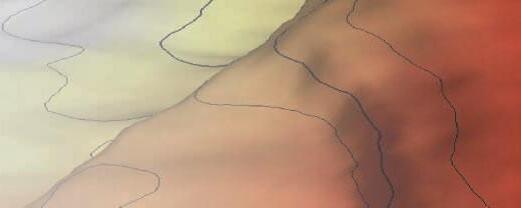
Blueback Reservoir is a fast growing technology company specializing in providing consulting services and software solutions for the global exploration and production industry
Geomodeling Consulting Services
Onsite Consultants
Remote and/or ad hoc modeling support
Customized modeling solutions
Training and mentoring
Software Products
Blueback Project Tracker
The Blueback Toolbox
Bridge Electromagnetics
Earthworks Seismic Inversion
Spatial Image Connector



Software Development Services
Development of standalone software applications
Development of Petrel* plug-in applications
Development services as consultancy



sales@blueback-reservoir.com
www.blueback-reservoir.com
www.blueback-reservoir.com